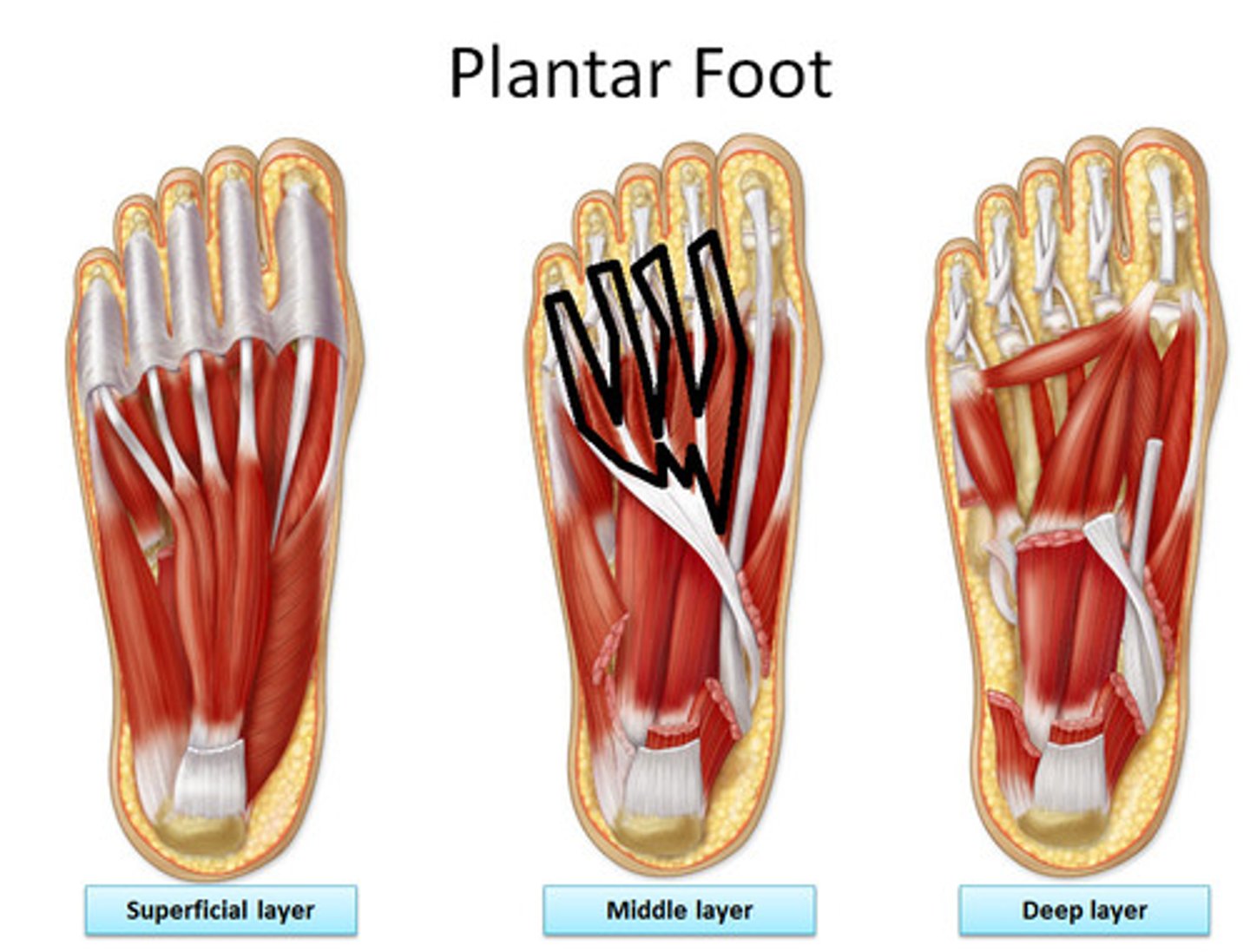Lower Limb Muscles
1/53
There's no tags or description
Looks like no tags are added yet.
Name | Mastery | Learn | Test | Matching | Spaced |
|---|
No study sessions yet.
54 Terms
Psoas Major
Origin: vertebrae T12-L4
Insertion: Lesser trochanter
Action: Flexes and rotates hip
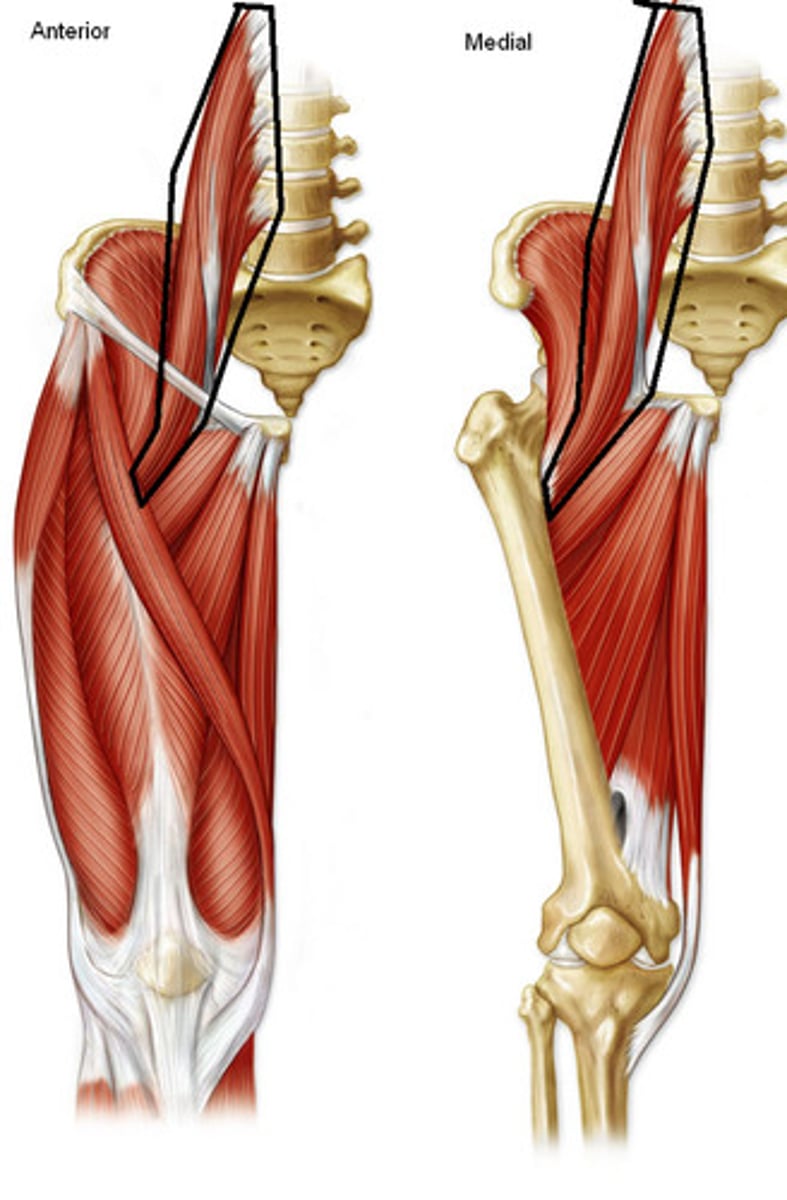
Iliacus
Origin: iliac fossa
Insertion: lesser trochanter
Action: Flexes and rotates hip
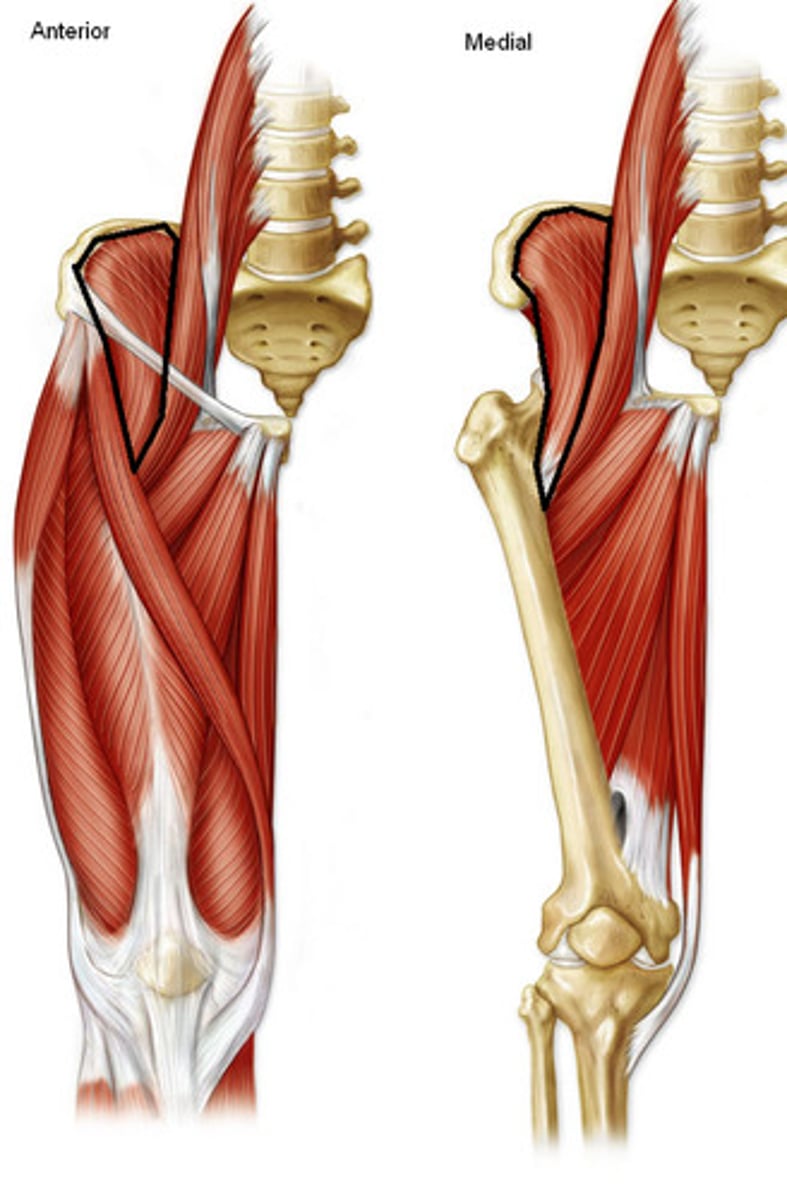
Iliopsoas
psoas and iliacus muscles combine to from this muscle as it enters the thigh region
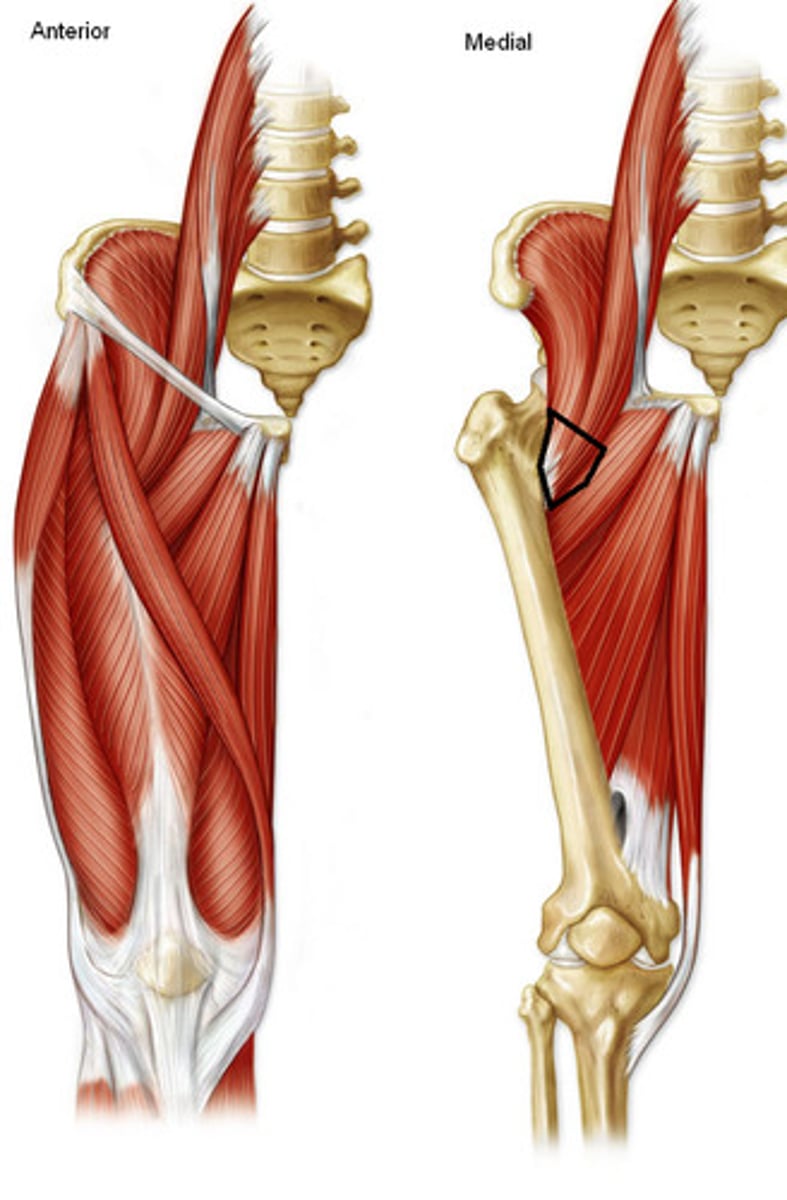
Gluteus Maximus
Origin: Posterior iliac crest and sacrum
Insertion gluteal tuberosit and iliotibial tract
Action: Extends and rotates hip; superior part abducts hip, inferior part aducts hip
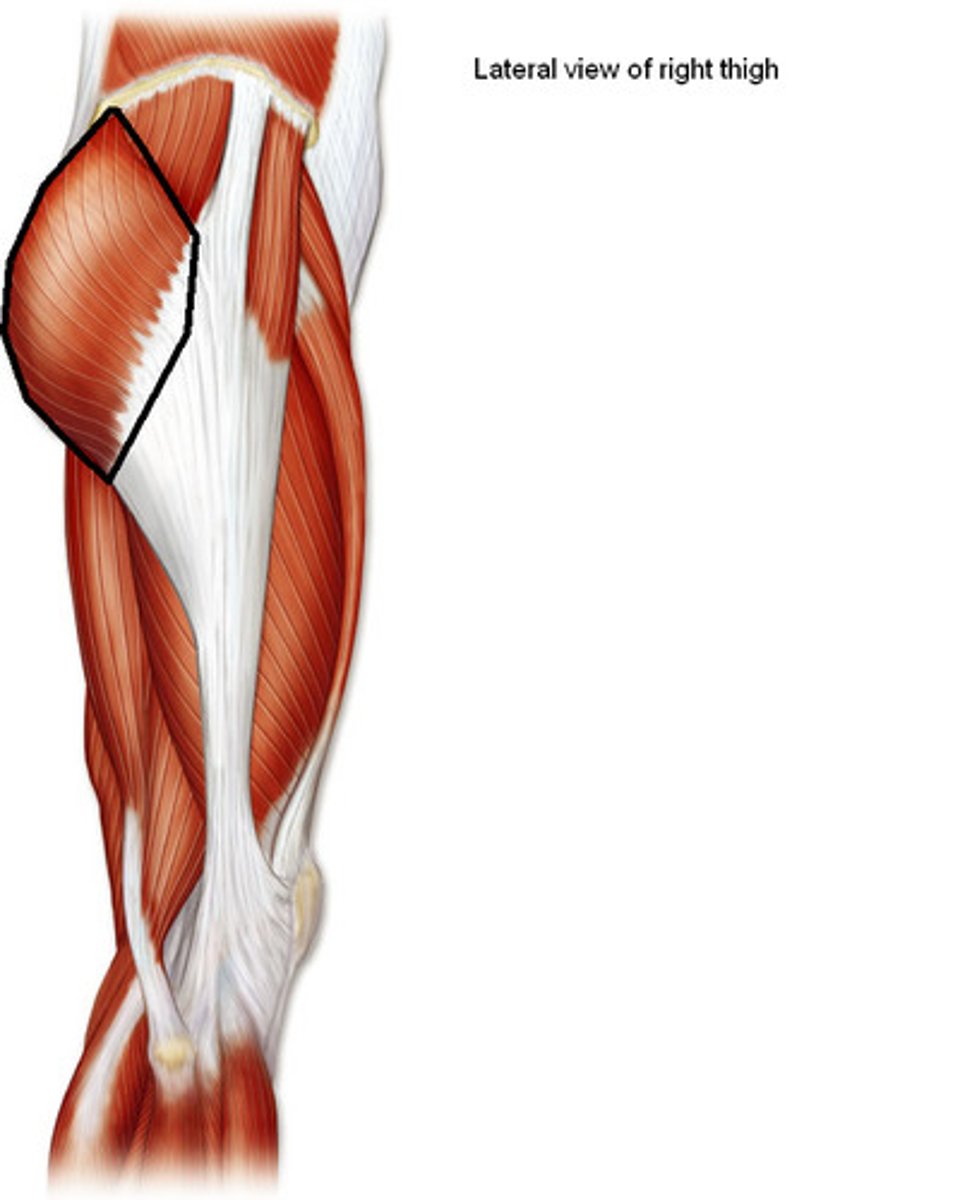
Gluteus Medius
Origin: Lateral iliac surface
Insertion: Greater Trochanter
Action: abducts hip; anterior part flezes and rotates hip, posterior part extends and rotates hip
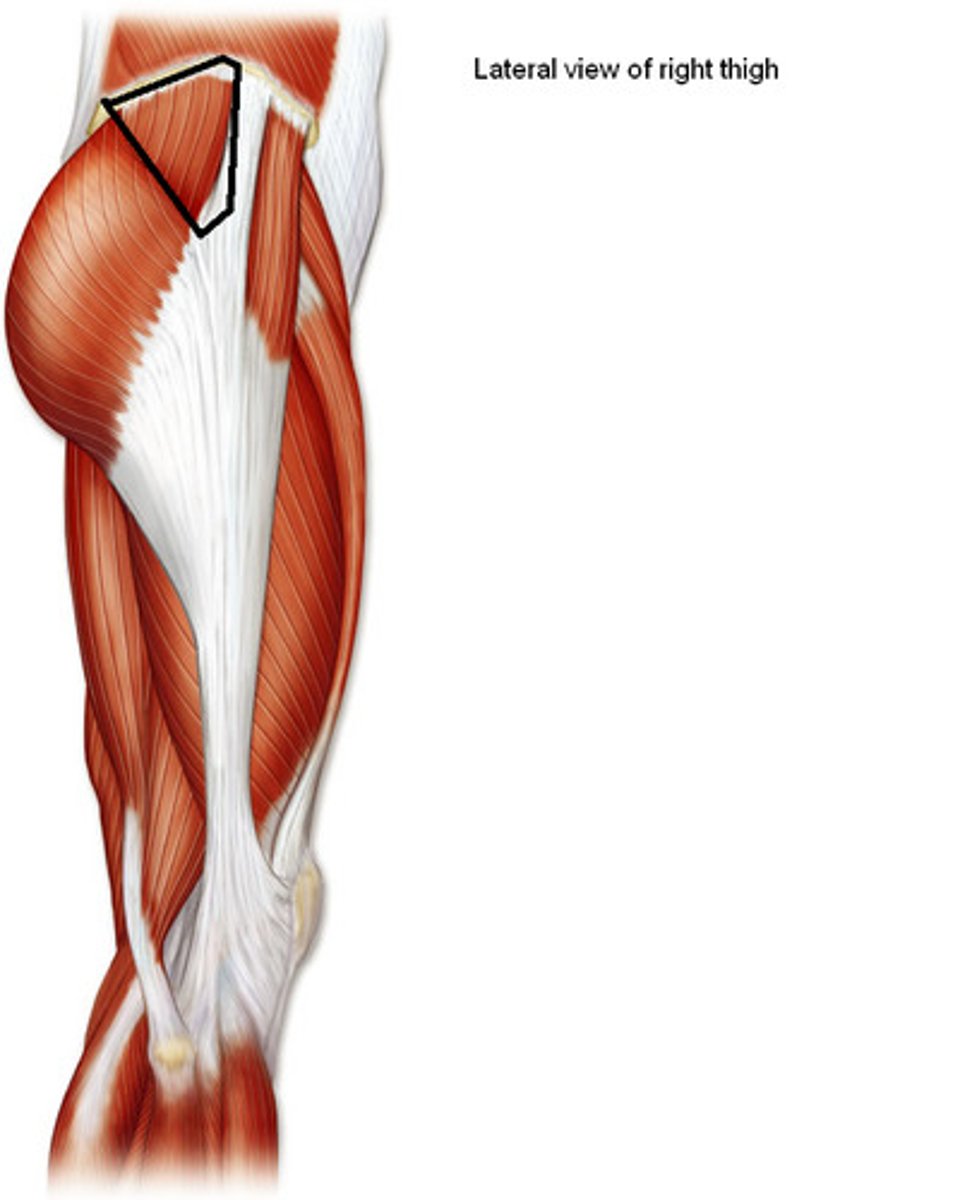
Tensor Fasciae Latae
Origin: Anterior superior iliac spine
Insertion: Iliotibial tract
Action: flexes and abducts hip, tenses fascia lata
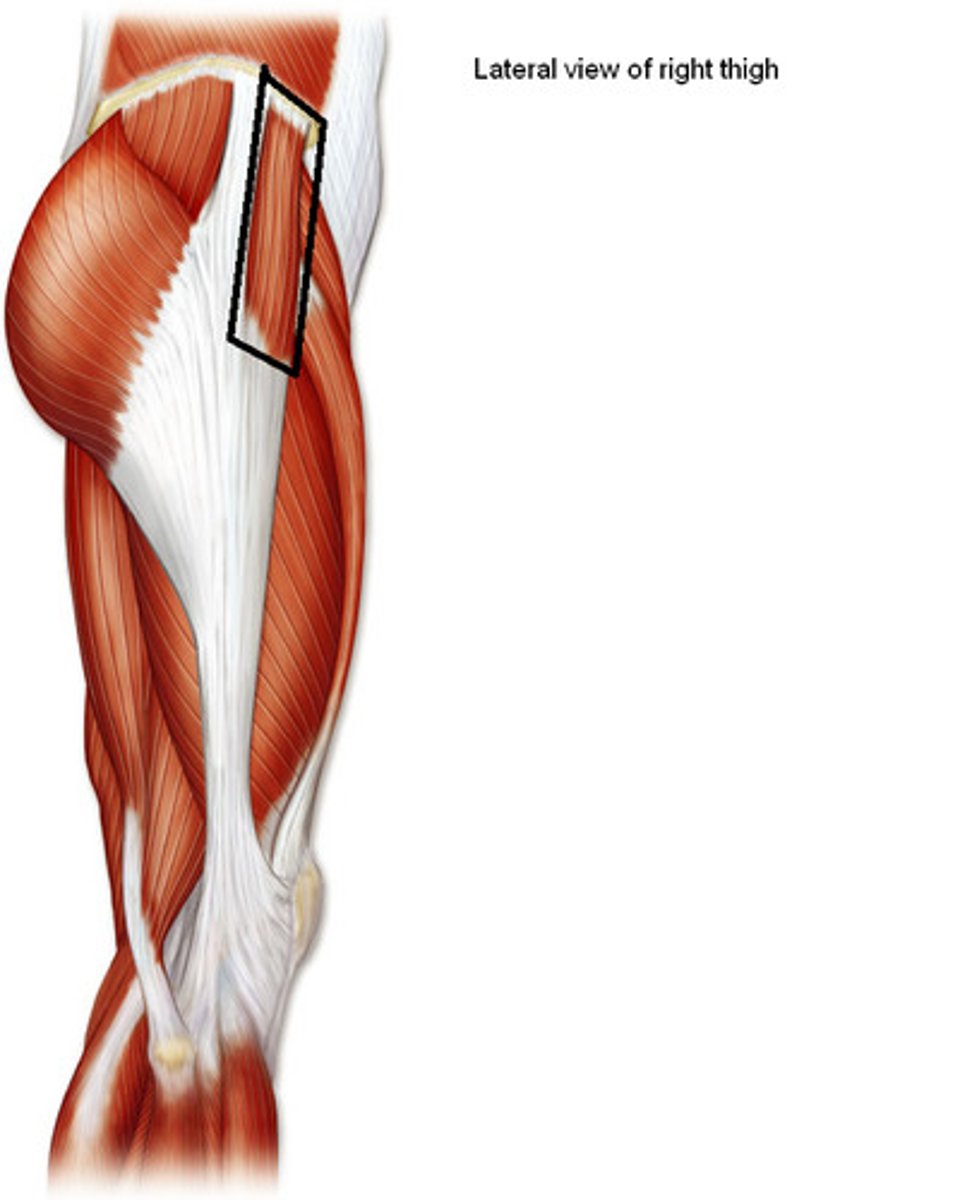
Fascia Lata
Layer of connective tissue overlying thigh muscles
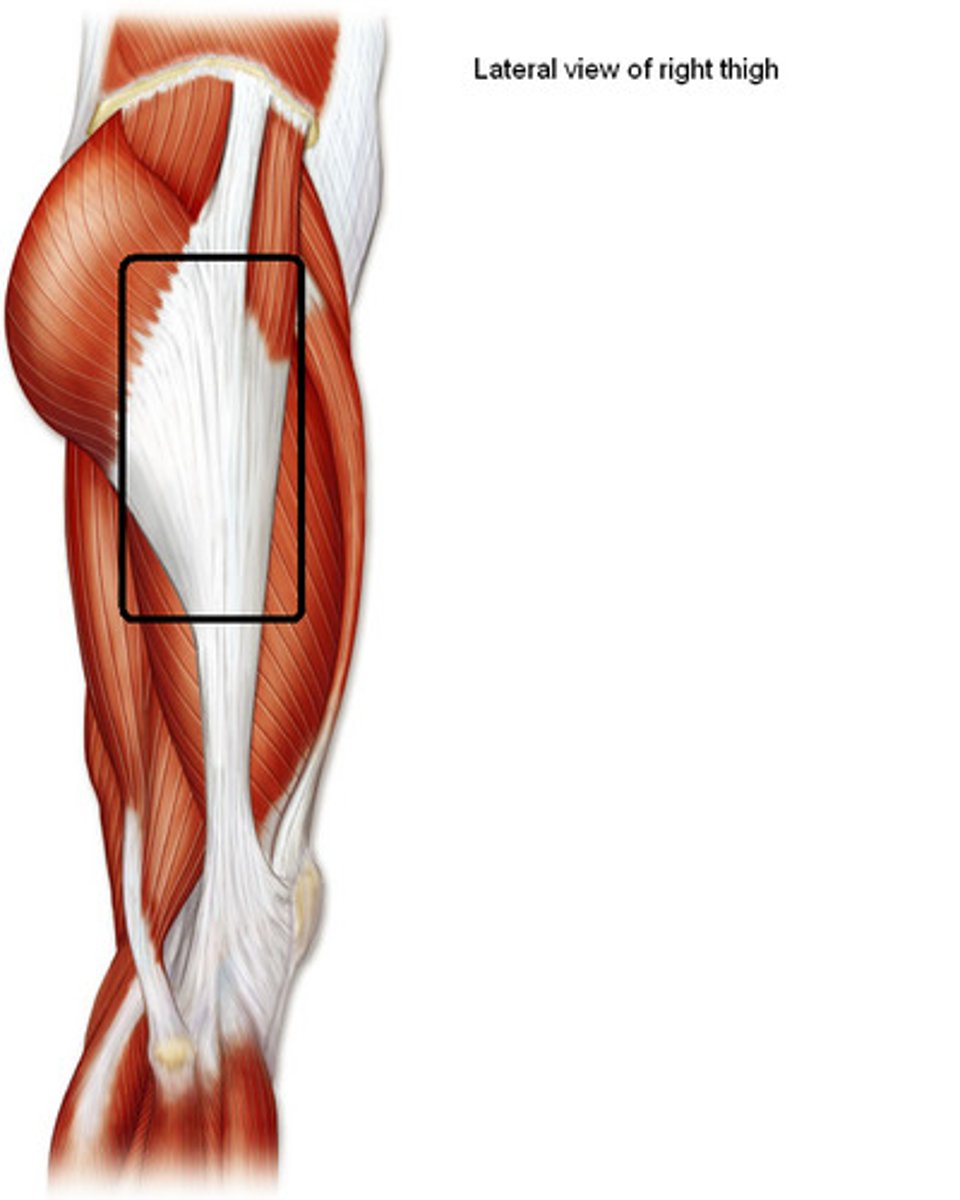
Iliotibial tract
Band of longitudinal fibers on lateral side of fascia lata, connects distally to the lateral condyle of tibia
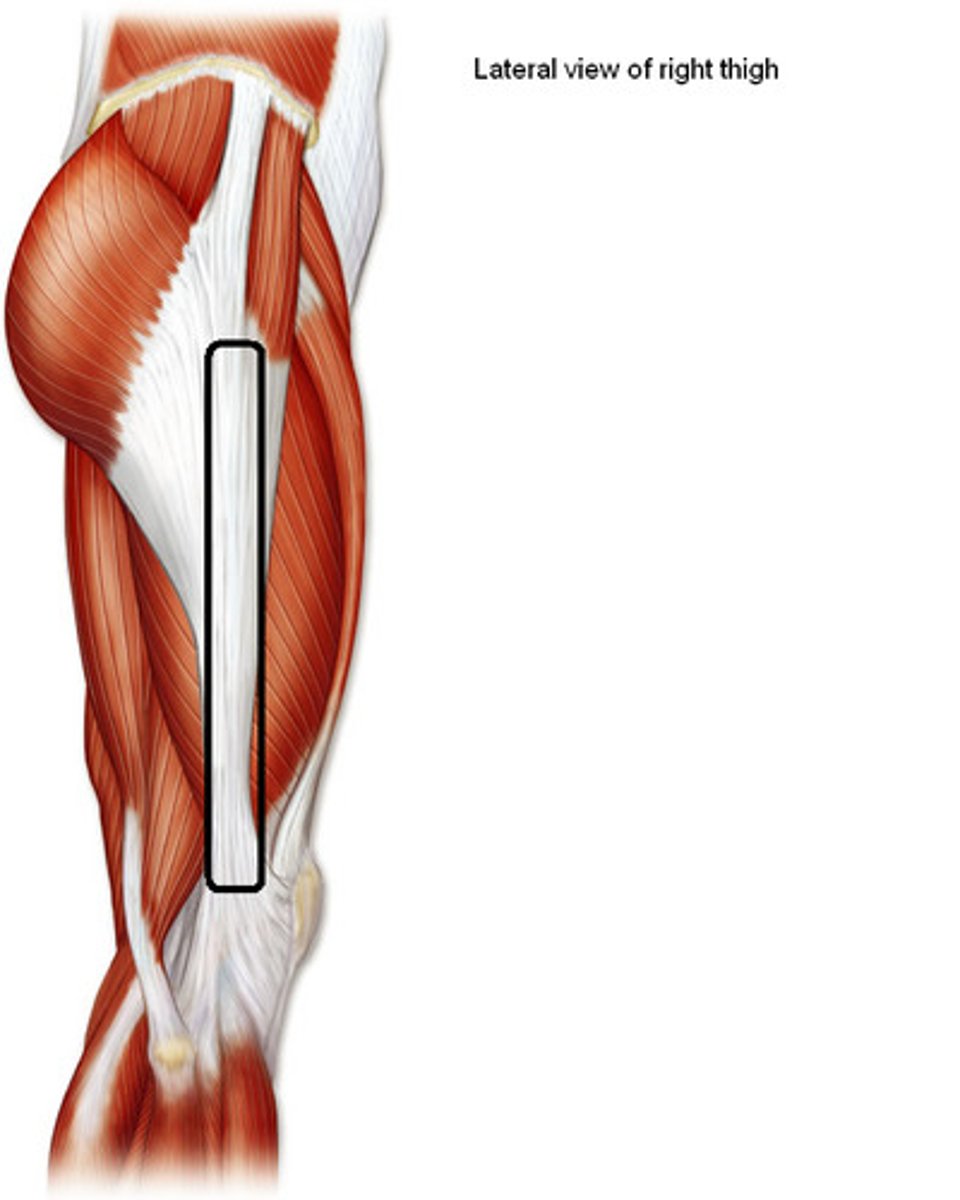
Piriformis
Origin: Anterior sacral surface
Insertion: greater trochanter
Action: Abducts, extends and rotates hip
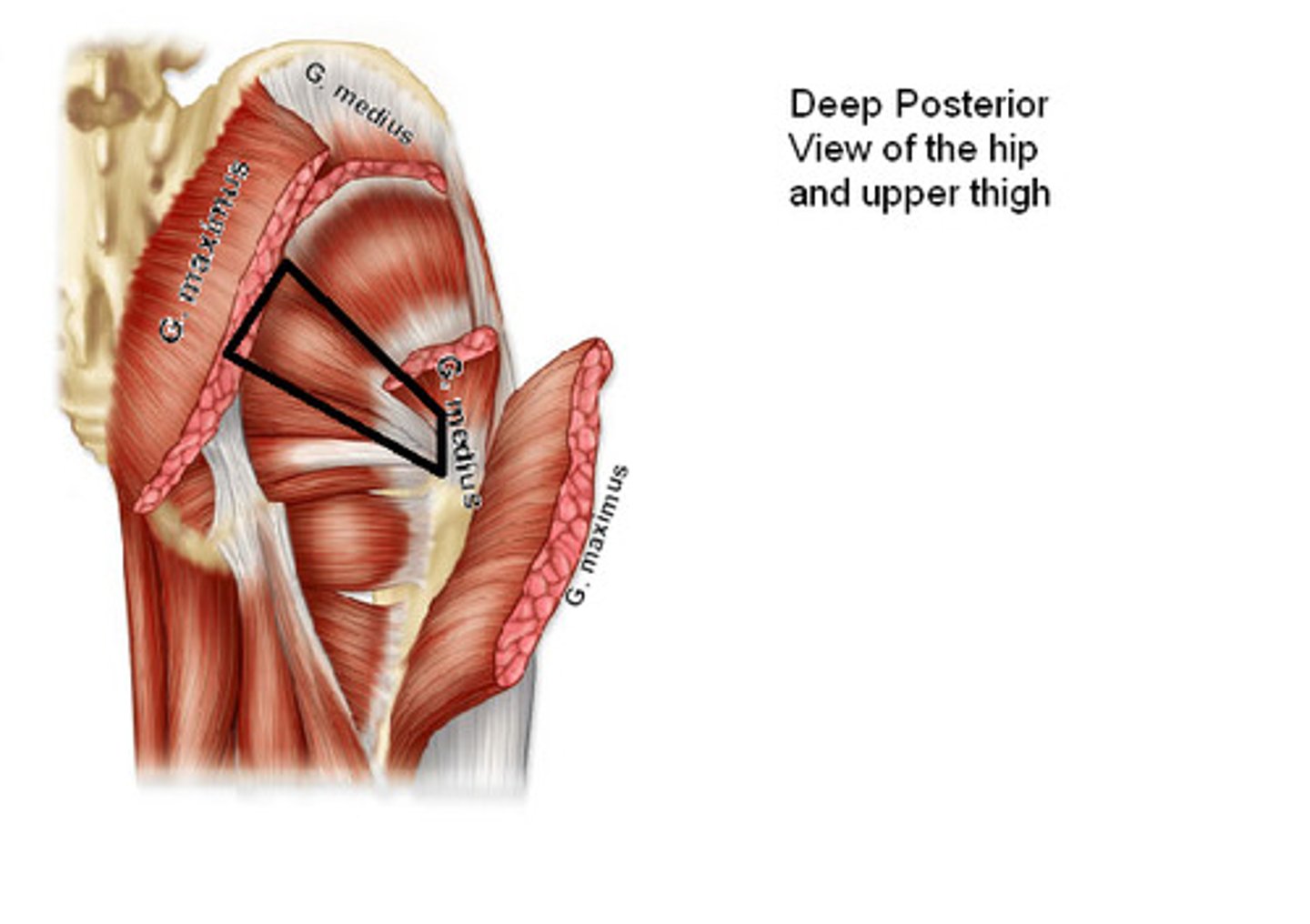
Gemellus Superior
Origin: Ischial Spine
Insertion: Greater Trochanter
Action: Adducts, extends and rotates hip
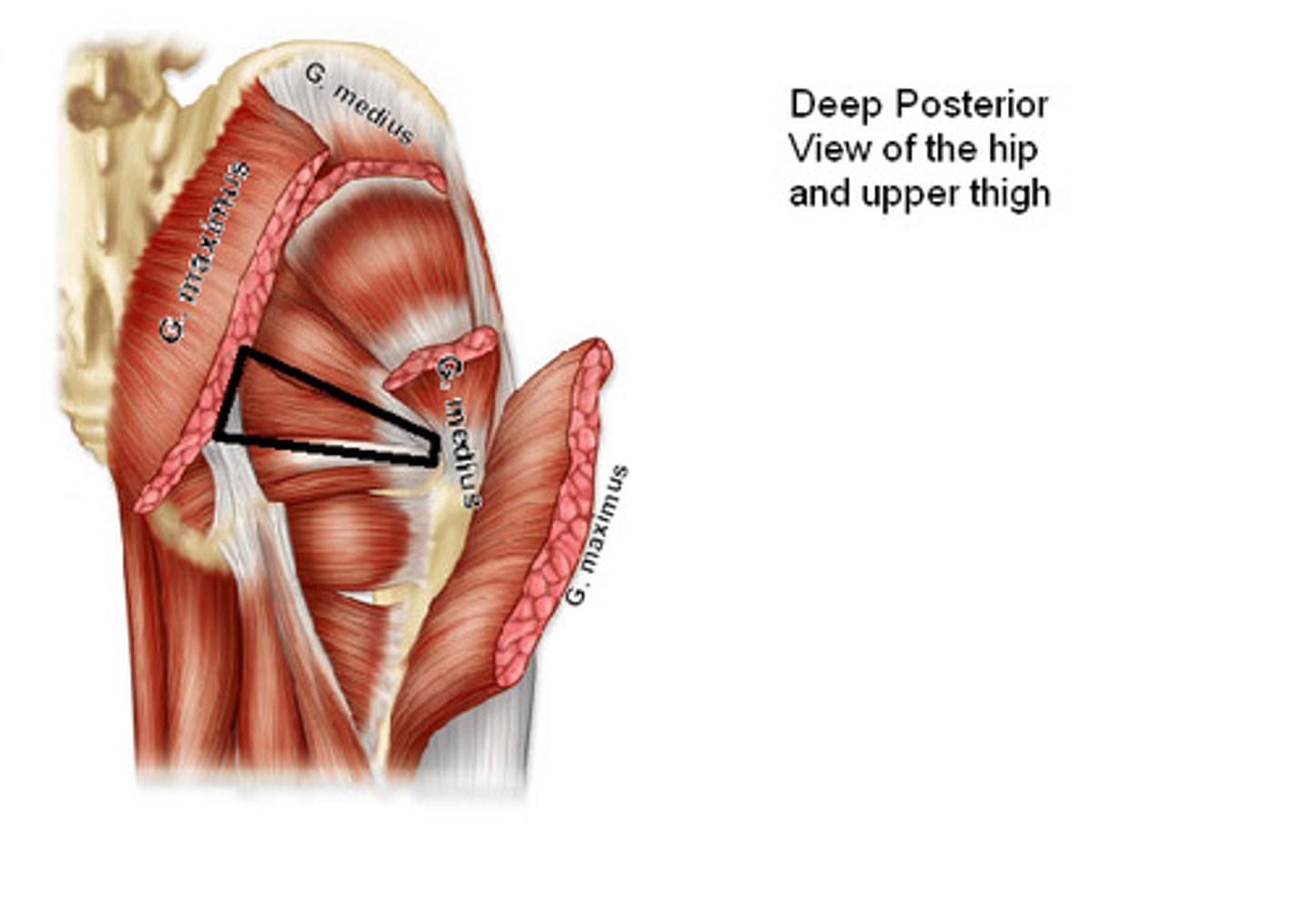
Obturator Internus
Origin: inner surface of obturator membrane
Insertion: greater trochanter
Action: adducts, extends and rotates hip
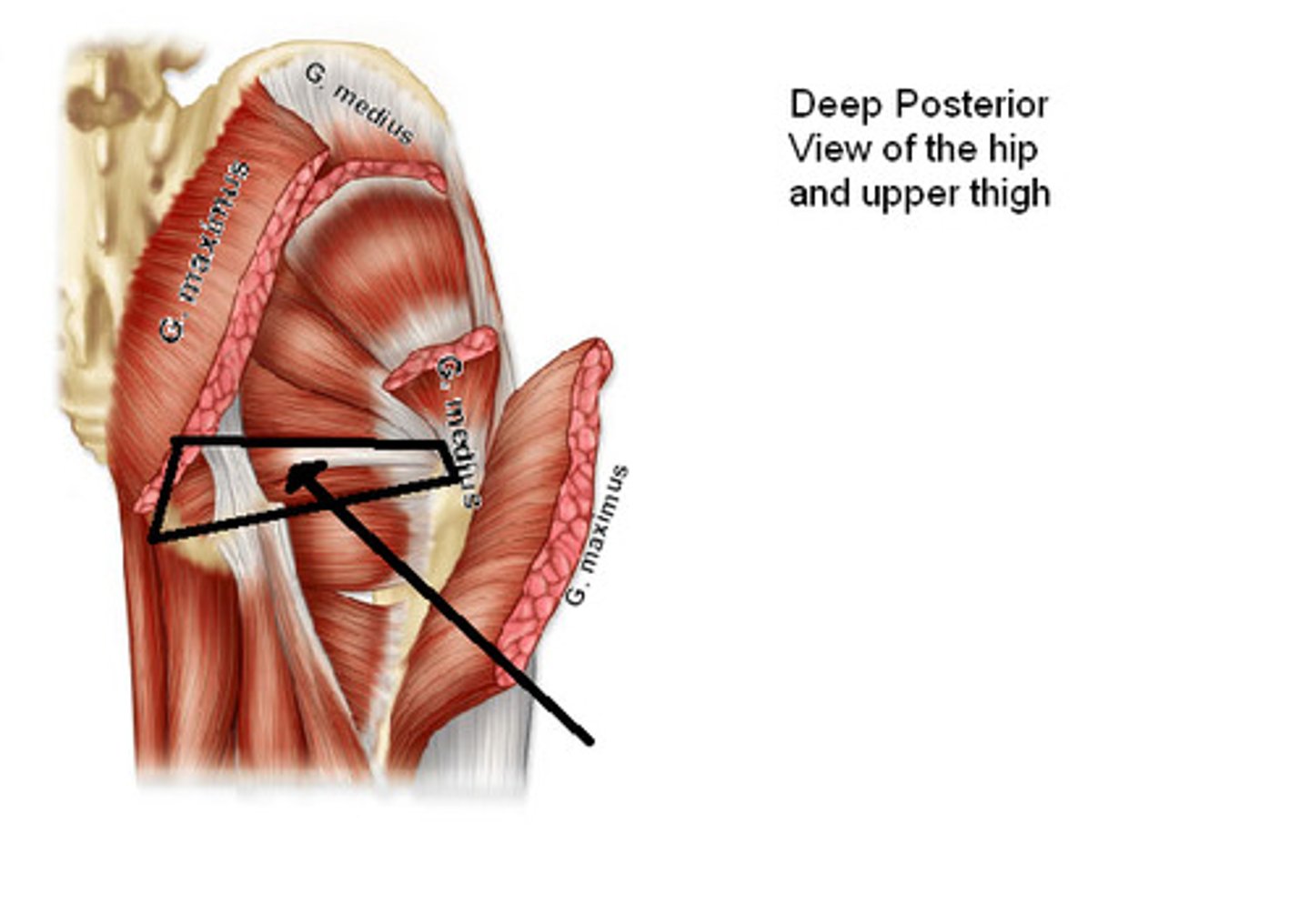
Gemellus Inferior
Origin: Ischial tuberosity
Insertion: greater trochanter
Action: adducts, extends an rotates hip
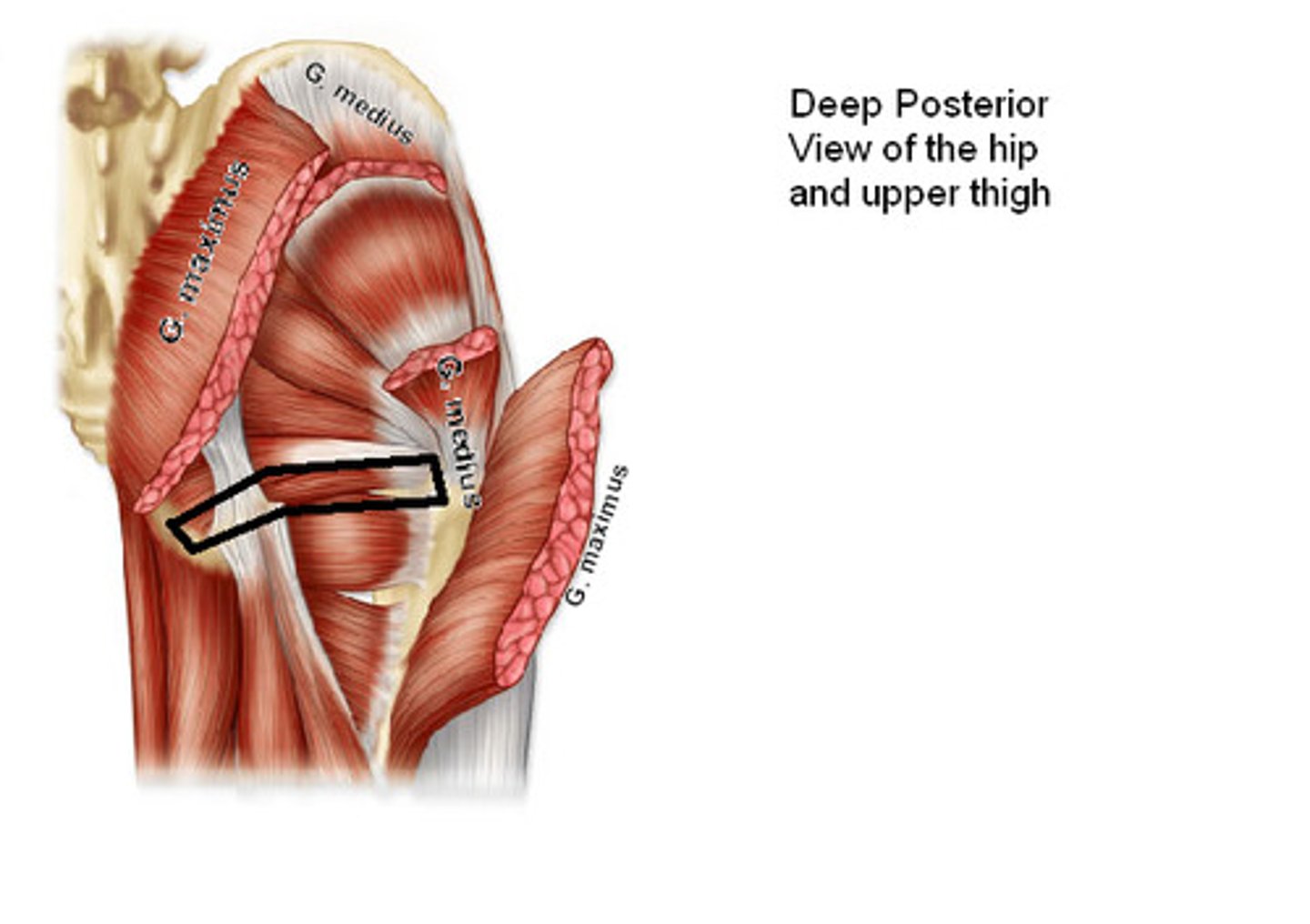
Quadratus Femoris
Origin: ischial tuberosity
Insertion: intertrochanteric crest
Action: adducts and rotates hip
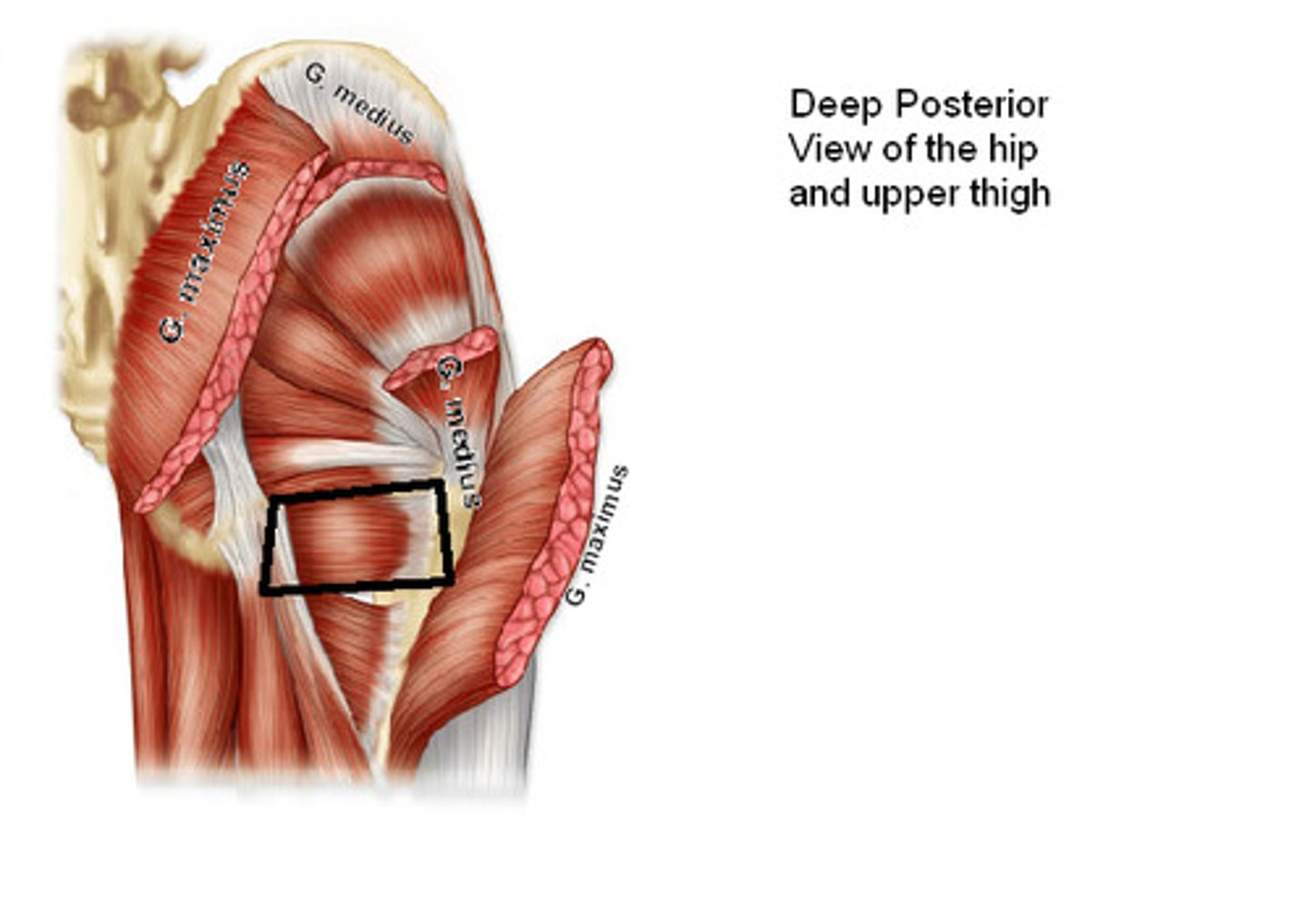
Sartorius
Origin: anterior superior iliac spine
Insertion: medial tibial surface
Action: flexes, abducts and rotates hip; flexes and rotates knee
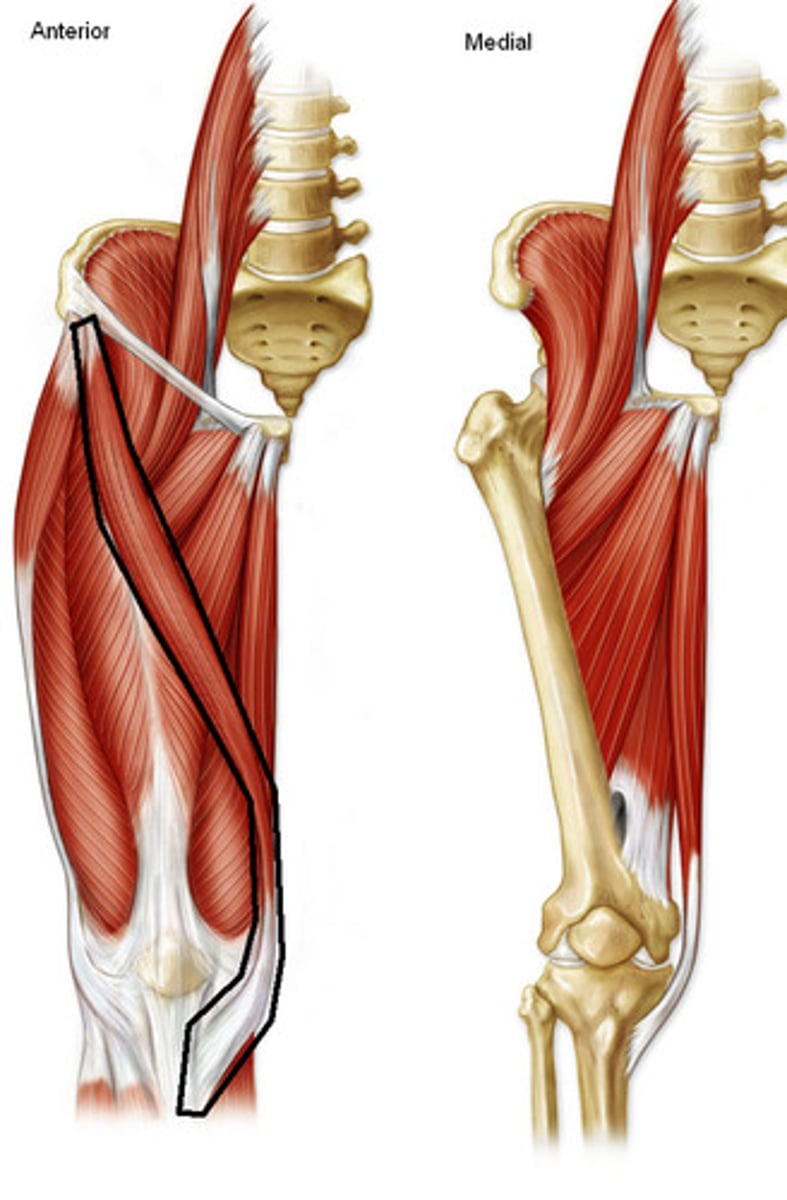
Quadriceps Femoris
Muscle group associated with movement of the knee (and hip)
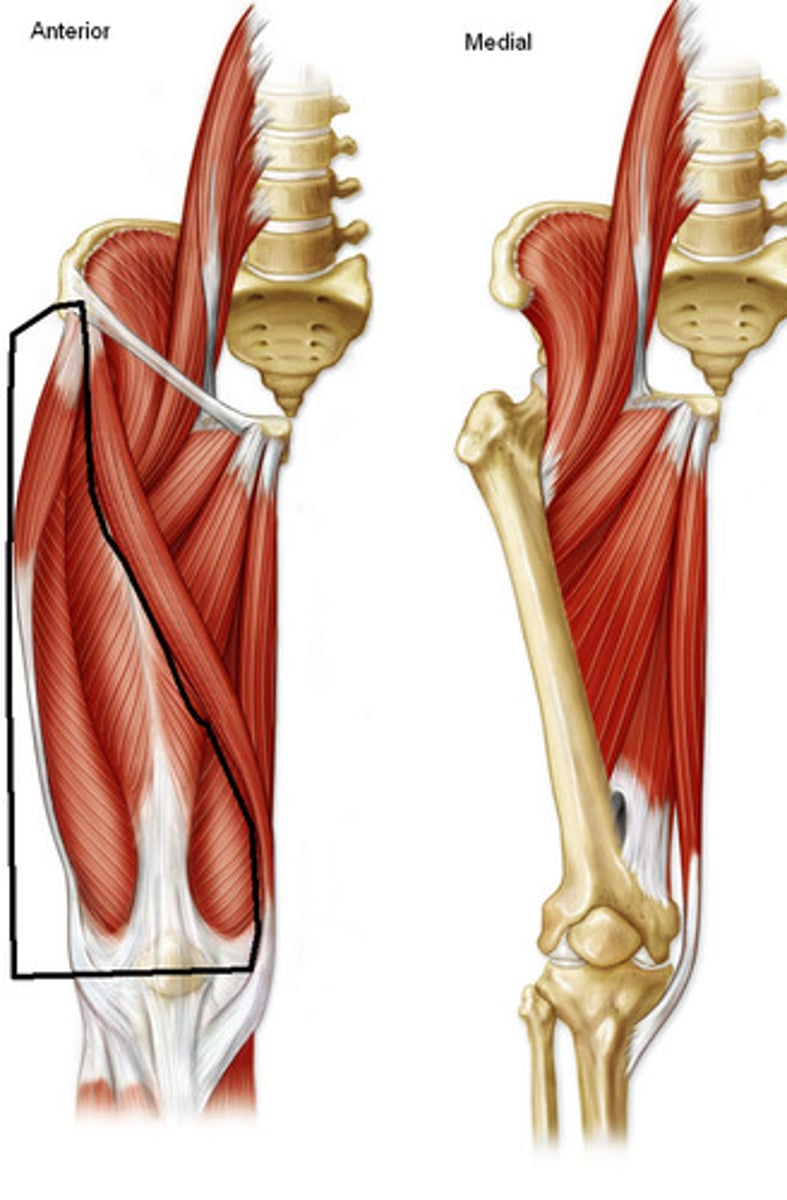
Rectus Femoris
Origin: anterior inferior iliac spine
Insertion: tibial tuberosity
Action: flexes hip; extends knee
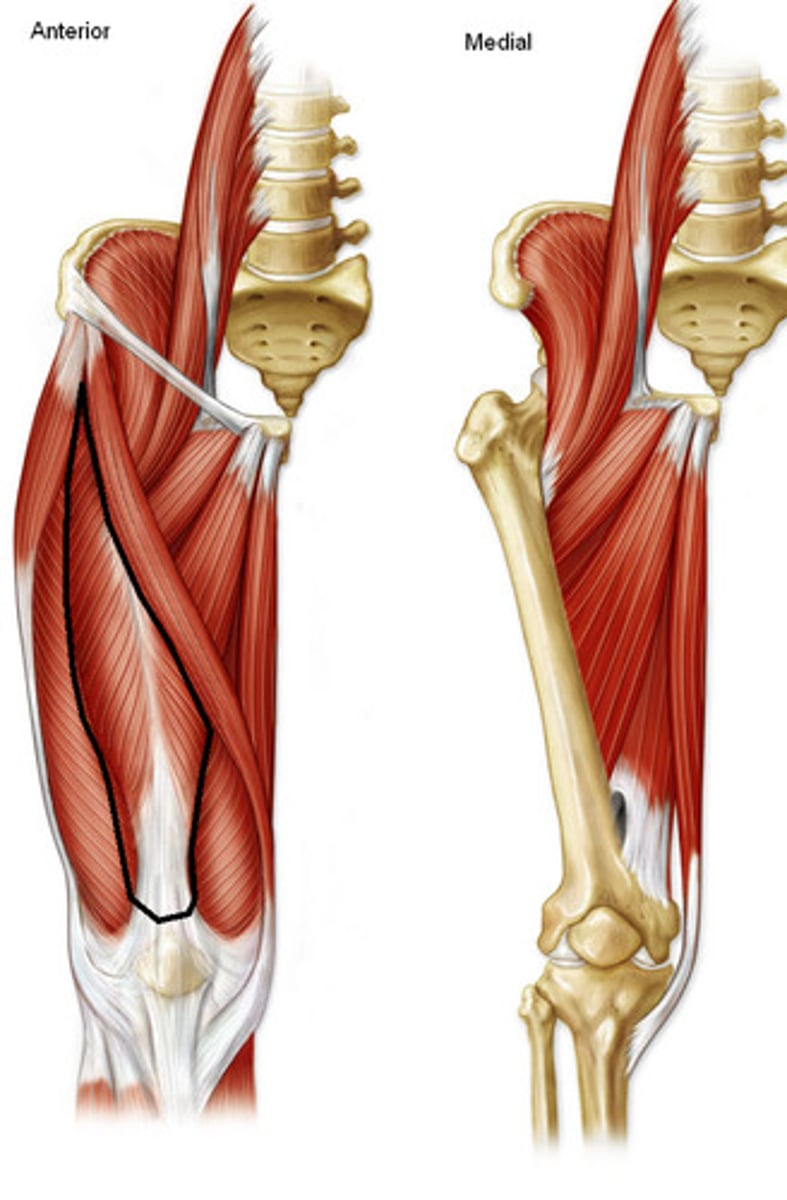
Vastus Intermedius
Origin: anterior shaft of femur
Insertion: tibial tuberosity
Action: extends knee

Vastus Lateralis
Origin: linea aspera
Insertion: tibial tuberosity
Action: extends knee
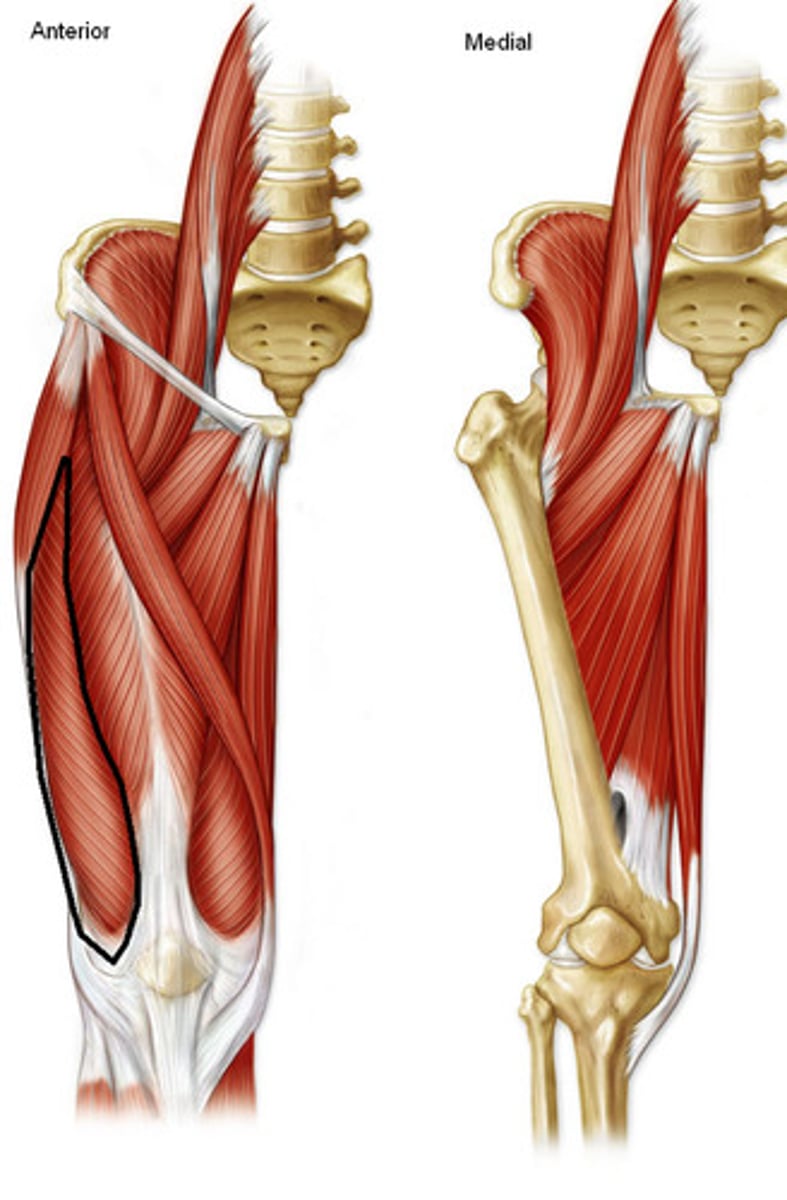
Vastus Medialis
Origin: linea aspera
Insertion: tibial tuberosity
Action: extends knee
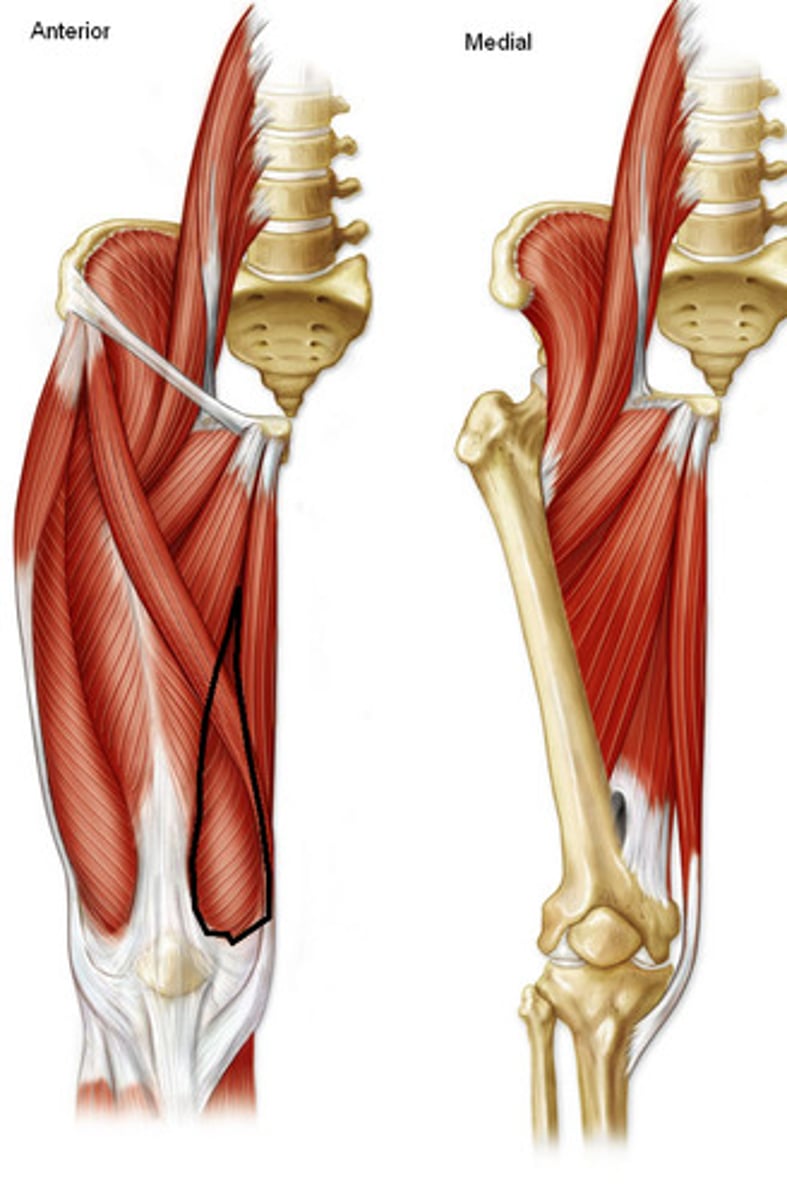
Quadriceps Tendon
common tendon for quadriceps group, attaches to patella
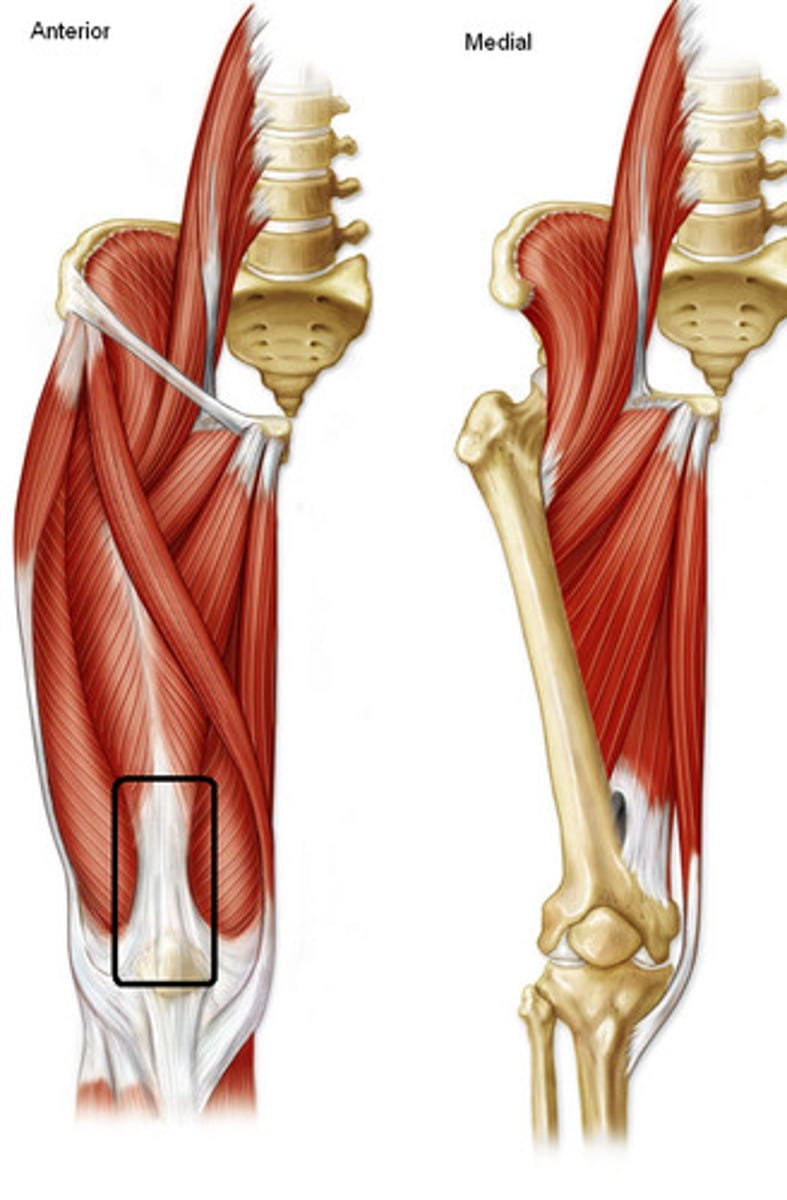
Patellar Ligament
transfers action of quadriceps muscles from patella to tibia
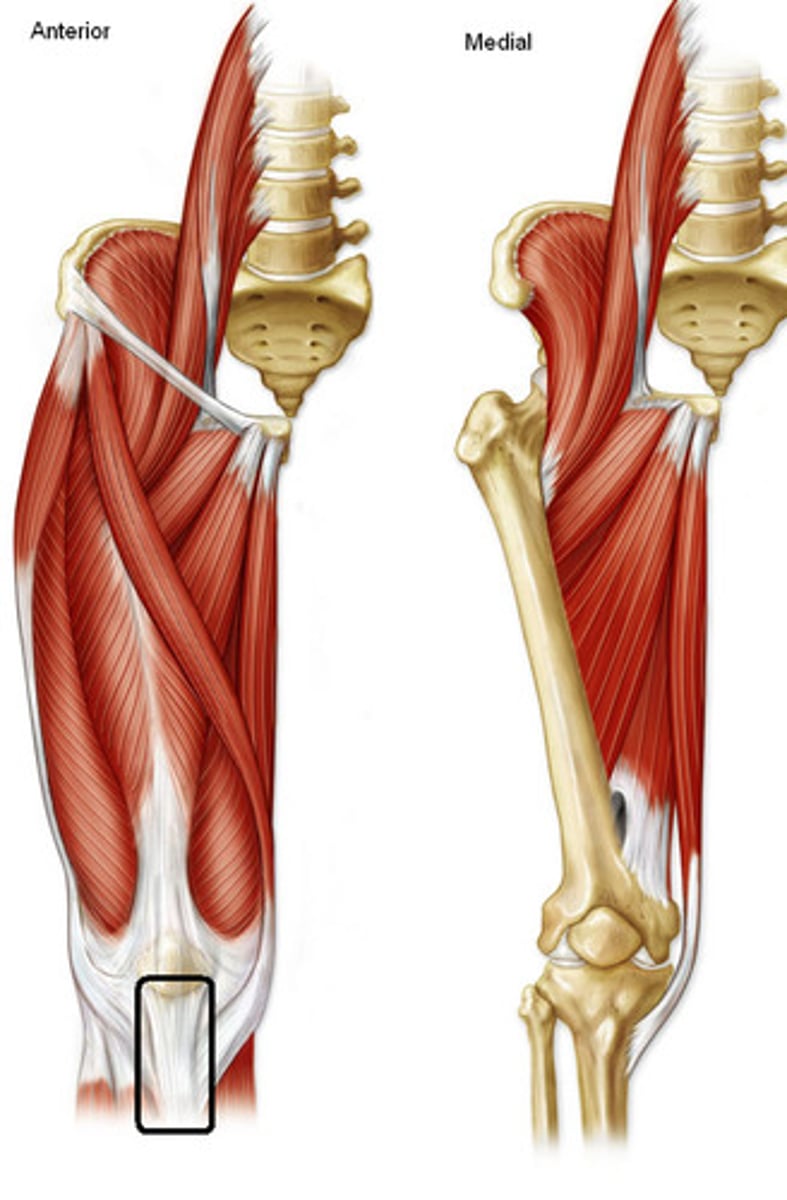
Pectineus
Origin: pectineal line of pubis
Insertion: proximal linea aspera
Action: adducts and rotates hip
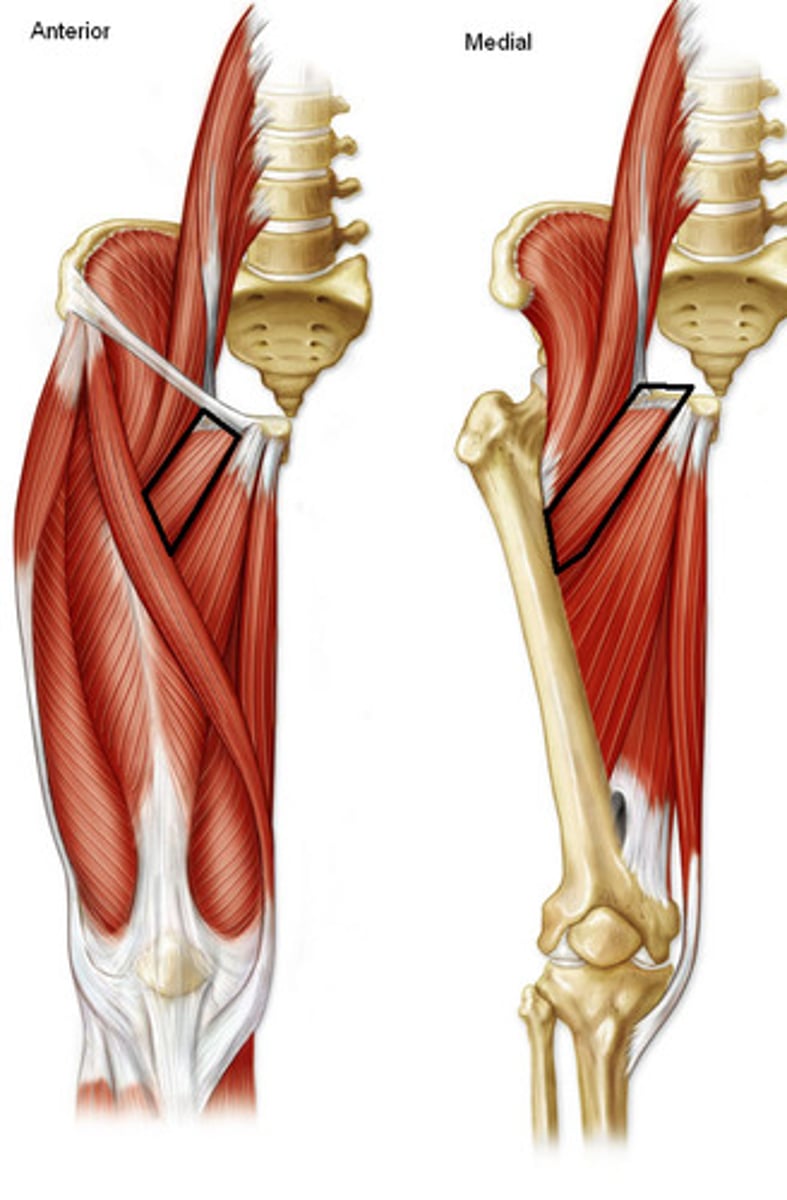
Adductor Longus
Origin: superior pubic ramus
Insertion: linea aspera
Action: adducts and flexes hip
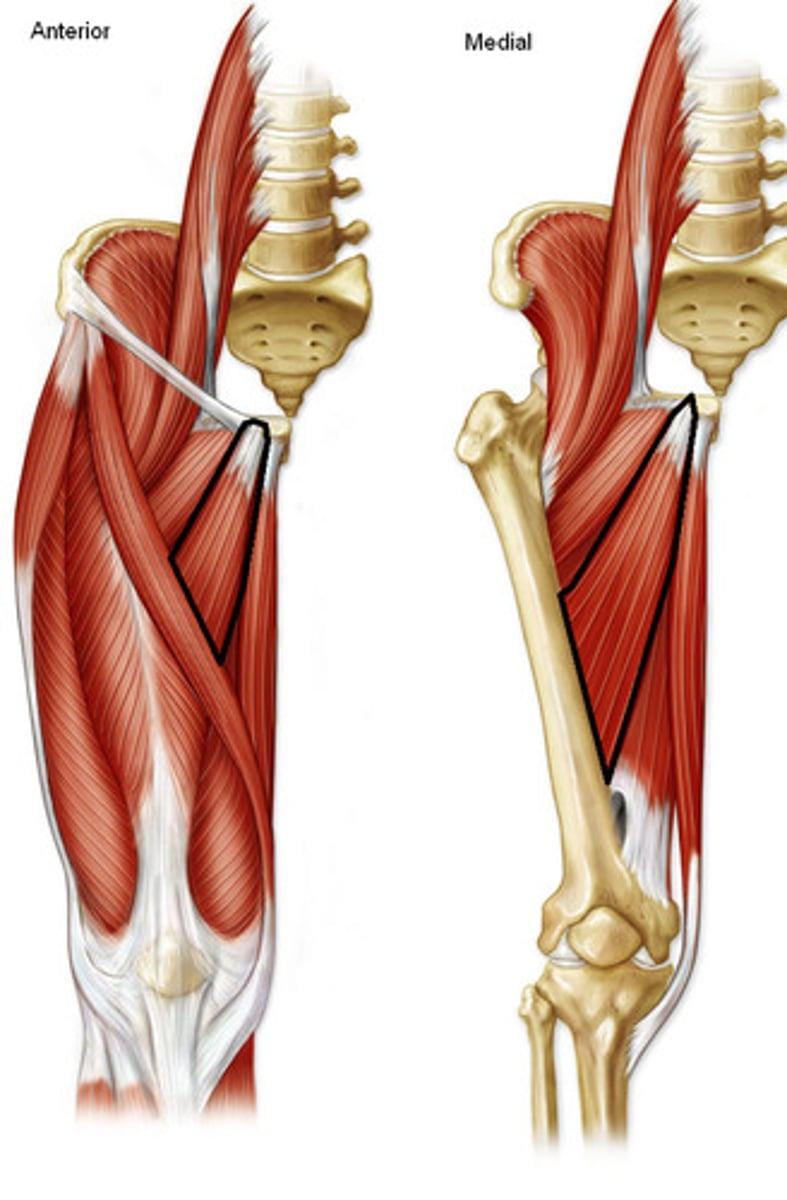
Adductor Magnus
Origin: inferior pubic and ischial rami, ischial tuberosity
Insertion: linea aspera
Action: adducts, extends and rotates hip
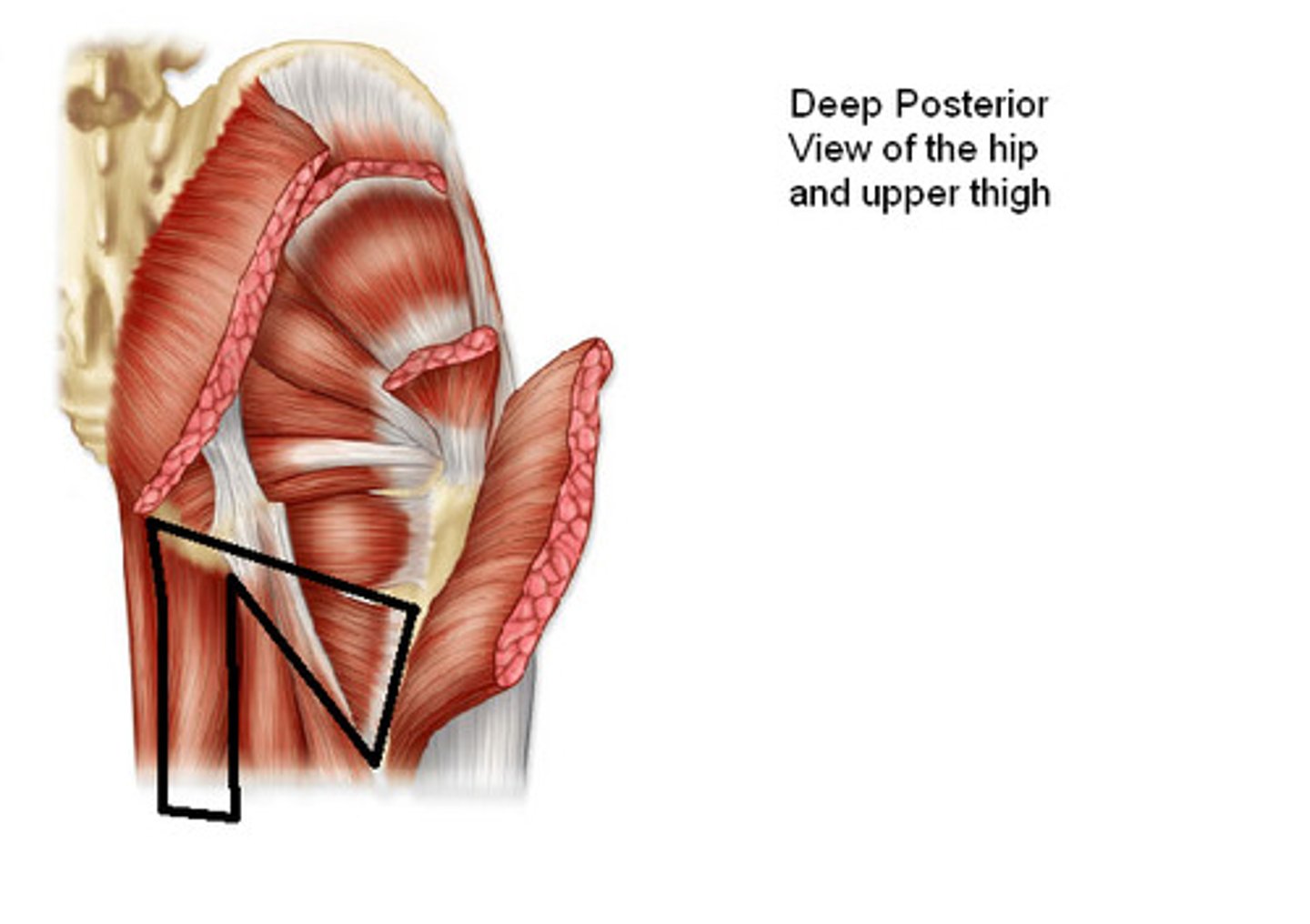
Gracilis
Origin: inferior pubic ramus
Insertion: medial tibial surface
Action: adducts and flexes hip
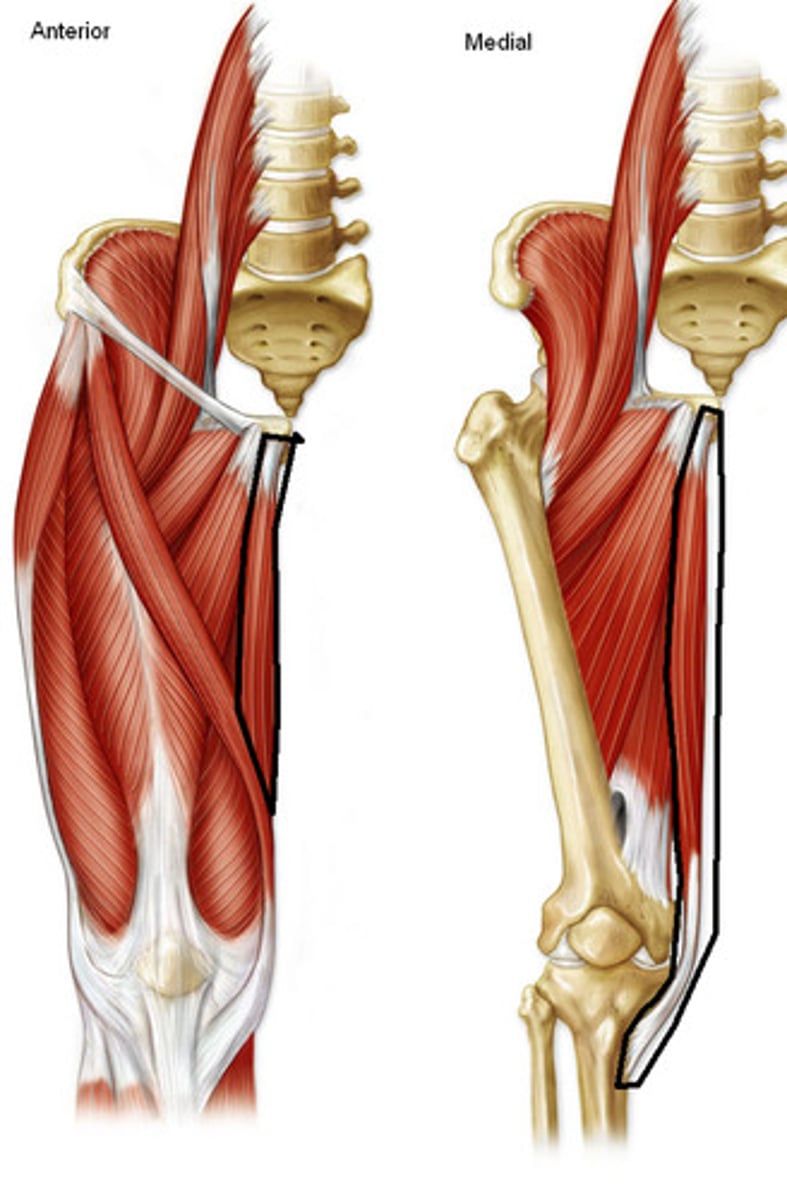
Biceps Femoris
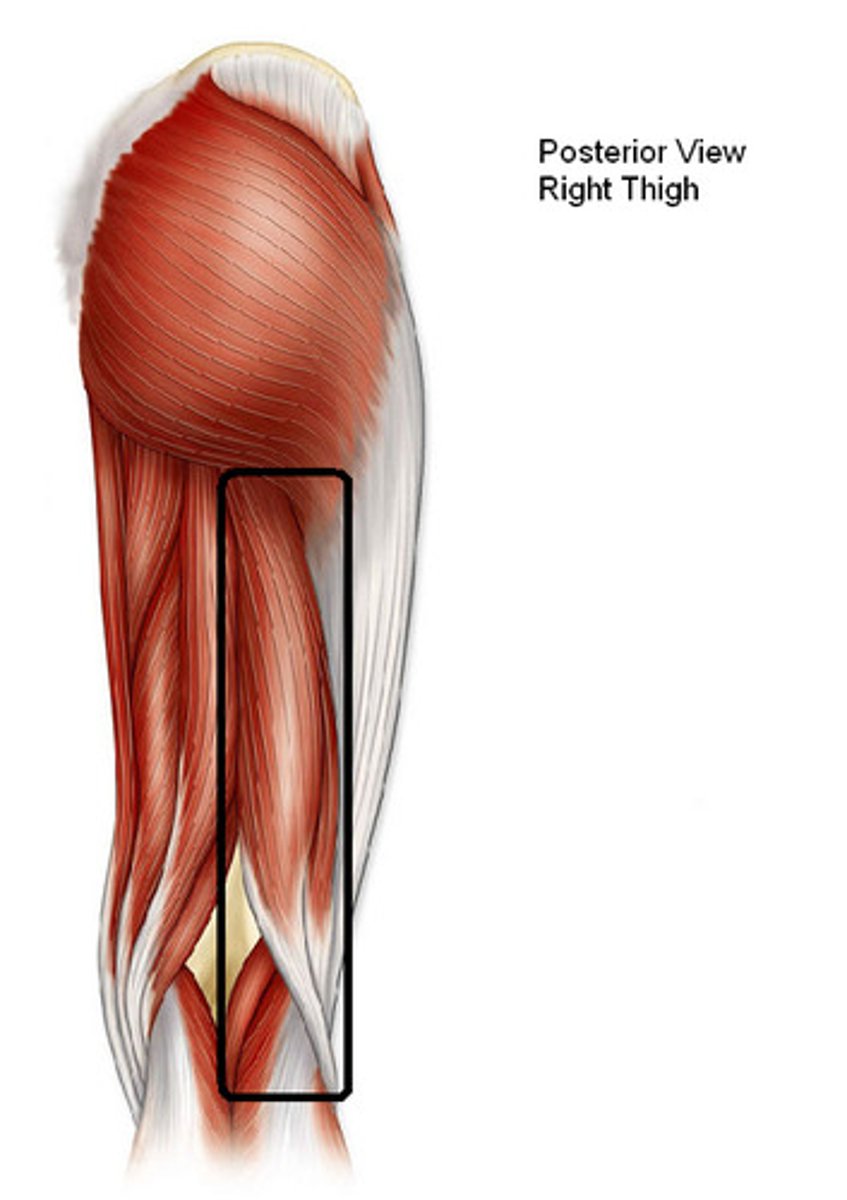
Long Head of Biceps Femoris
Origin: ischial tuberosity
Insertion: Head of fibula
Action: Flexes Knee and extends hip
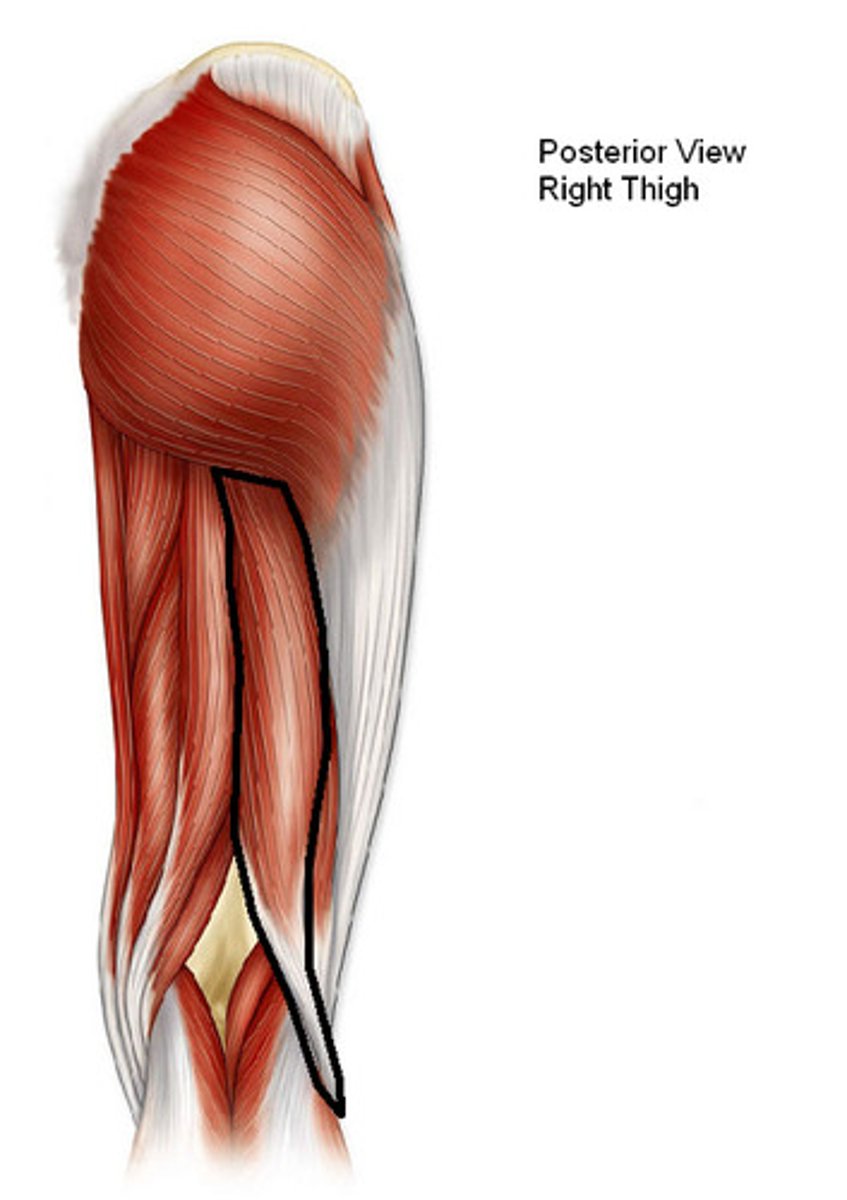
Short Head of Biceps Femoris
Origin: linea aspera
Insertion: head of fibula
Action: flexes knee
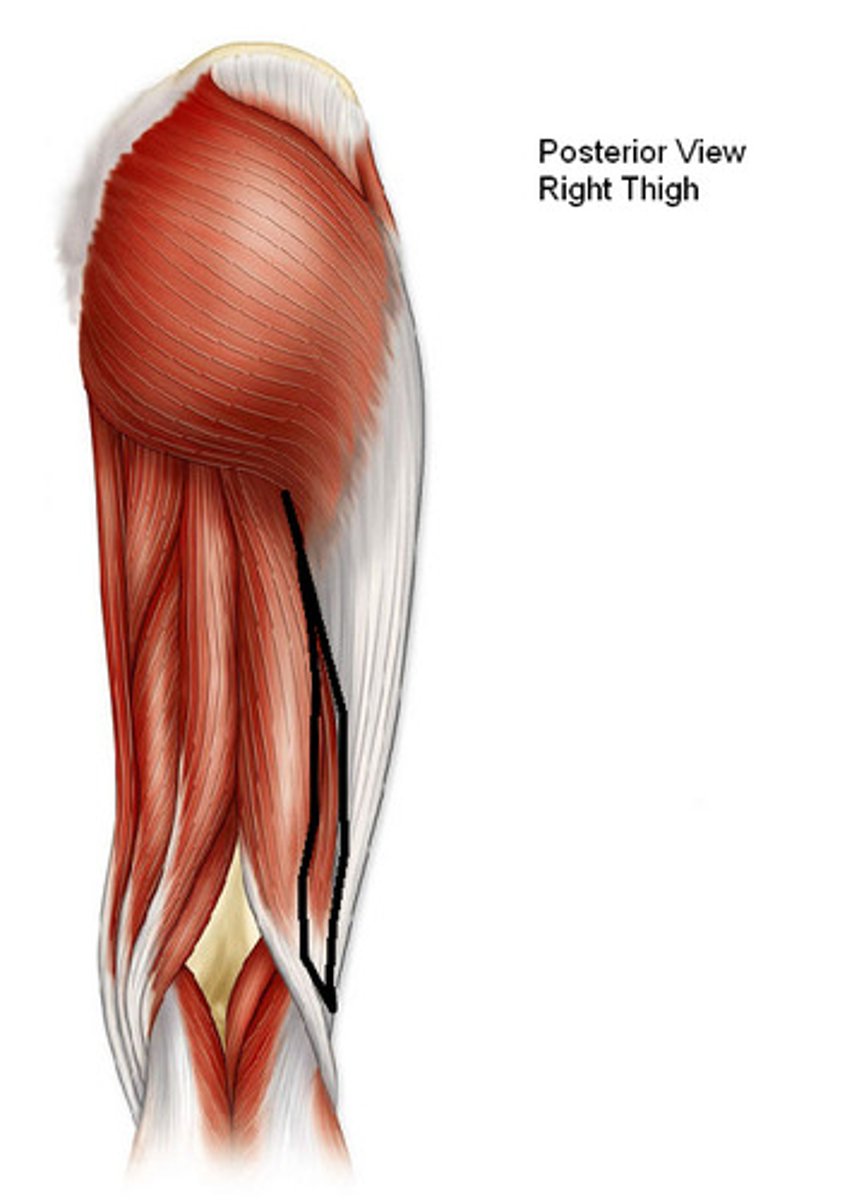
Semimebranosus
Origin: ischial tuberosity
Insertion: Medial condyle of tibia
Action: flexes knee and extends hip
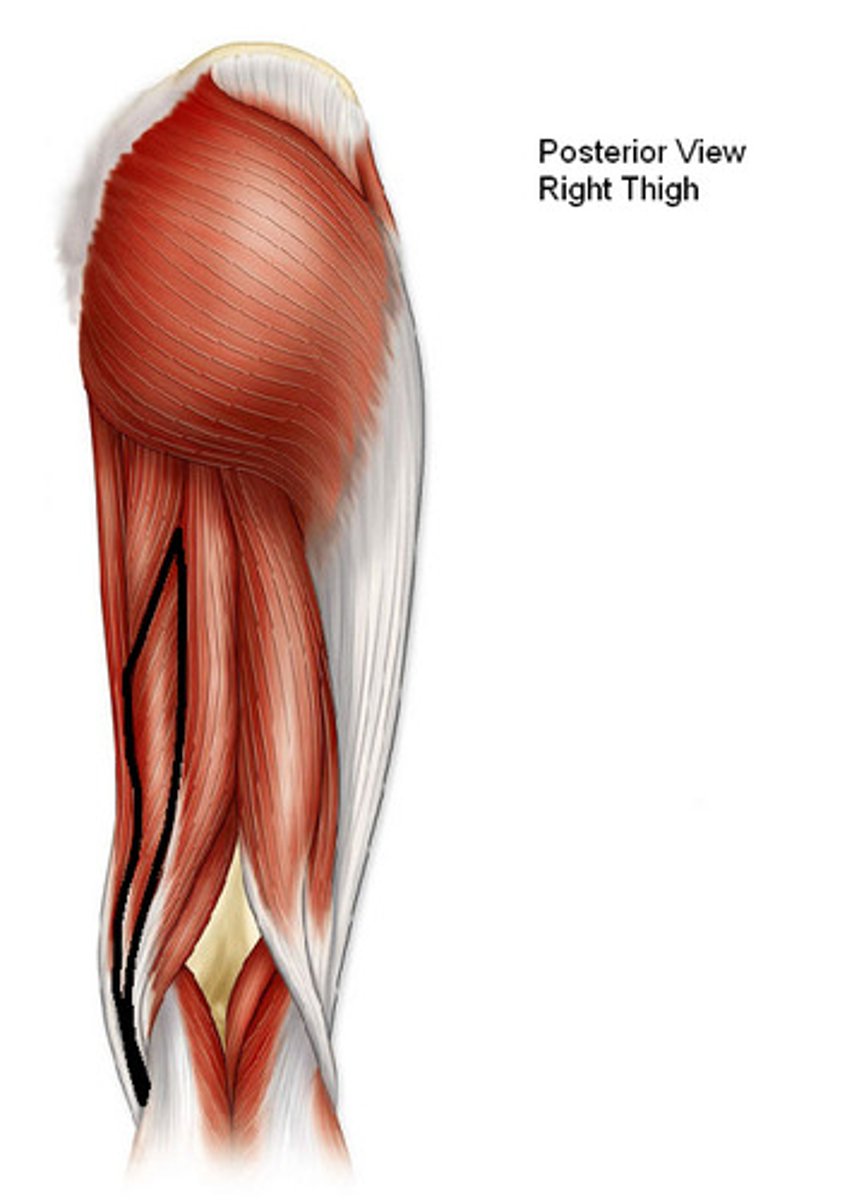
Semitendinosus
Origin: ischial tuberosity
Insertion: medial tibial surface
Action: flexes knee and extends hip
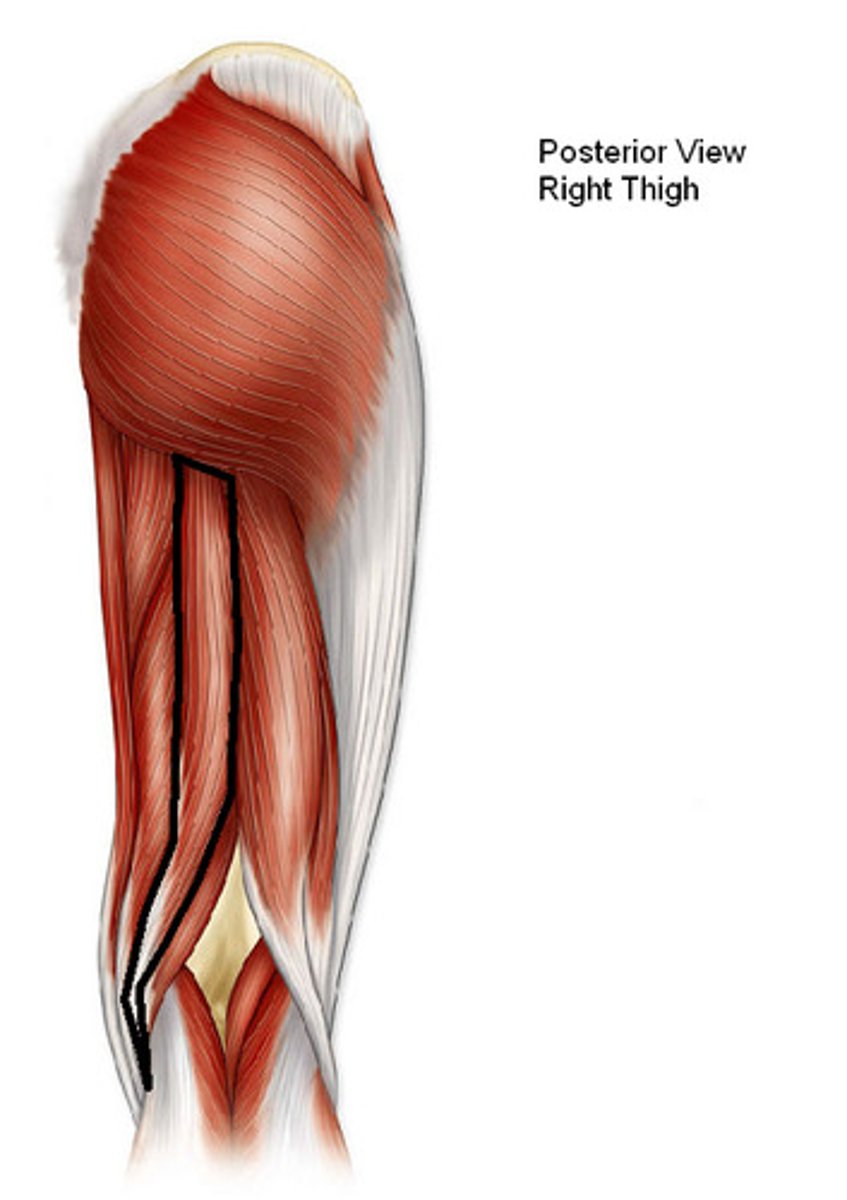
Tibialis Anterior
Origin: lateral tibial surface
Insertion: medial cuneiform and base of metatarsal I
Action: dorsiflexes and inverts foot
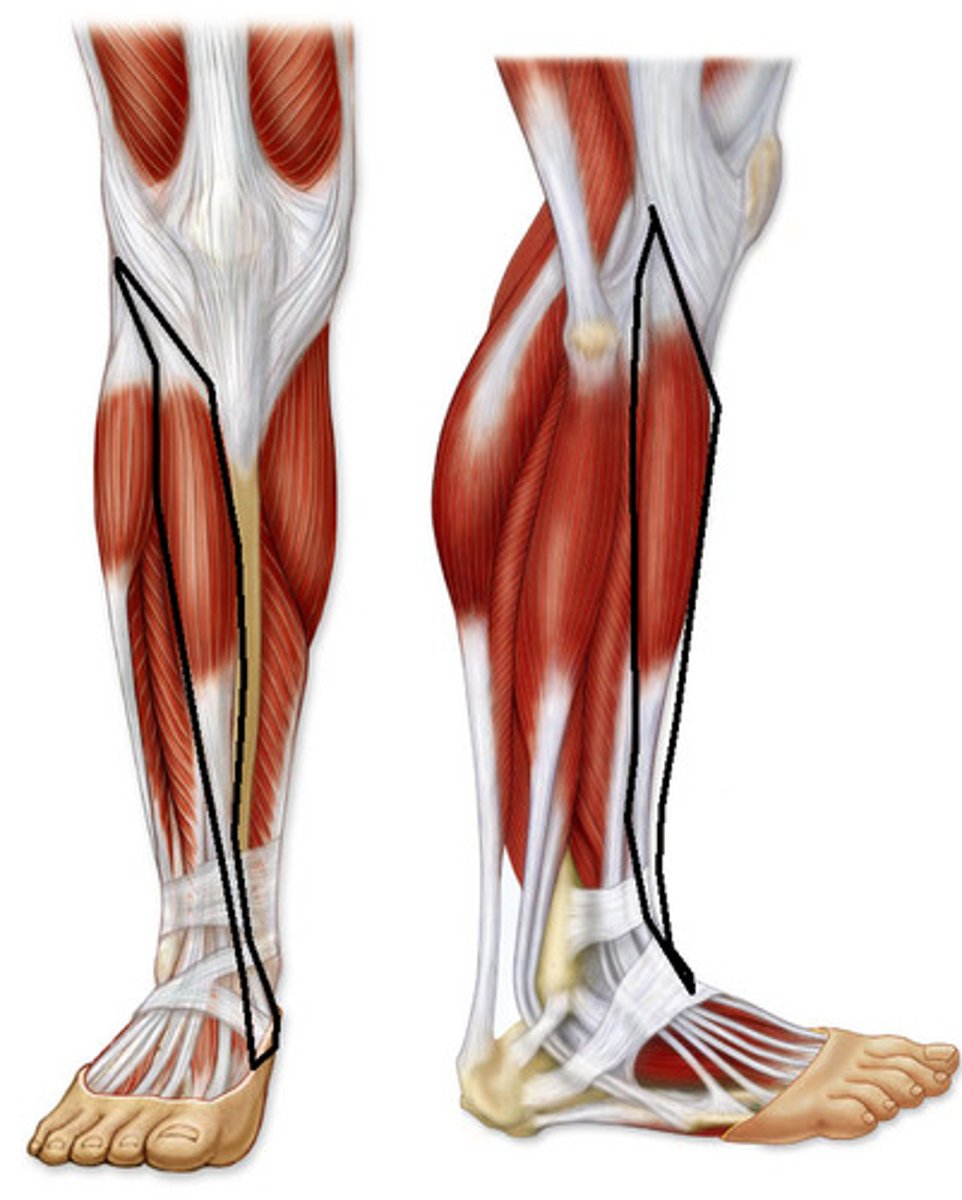
Extensor Digitorum Longus
Origin: lateral condyle of tibia, head and anterior fibula
Insertion: distal phalanges II-V
Action: dorsiflexes and inverts foot; extends hallux
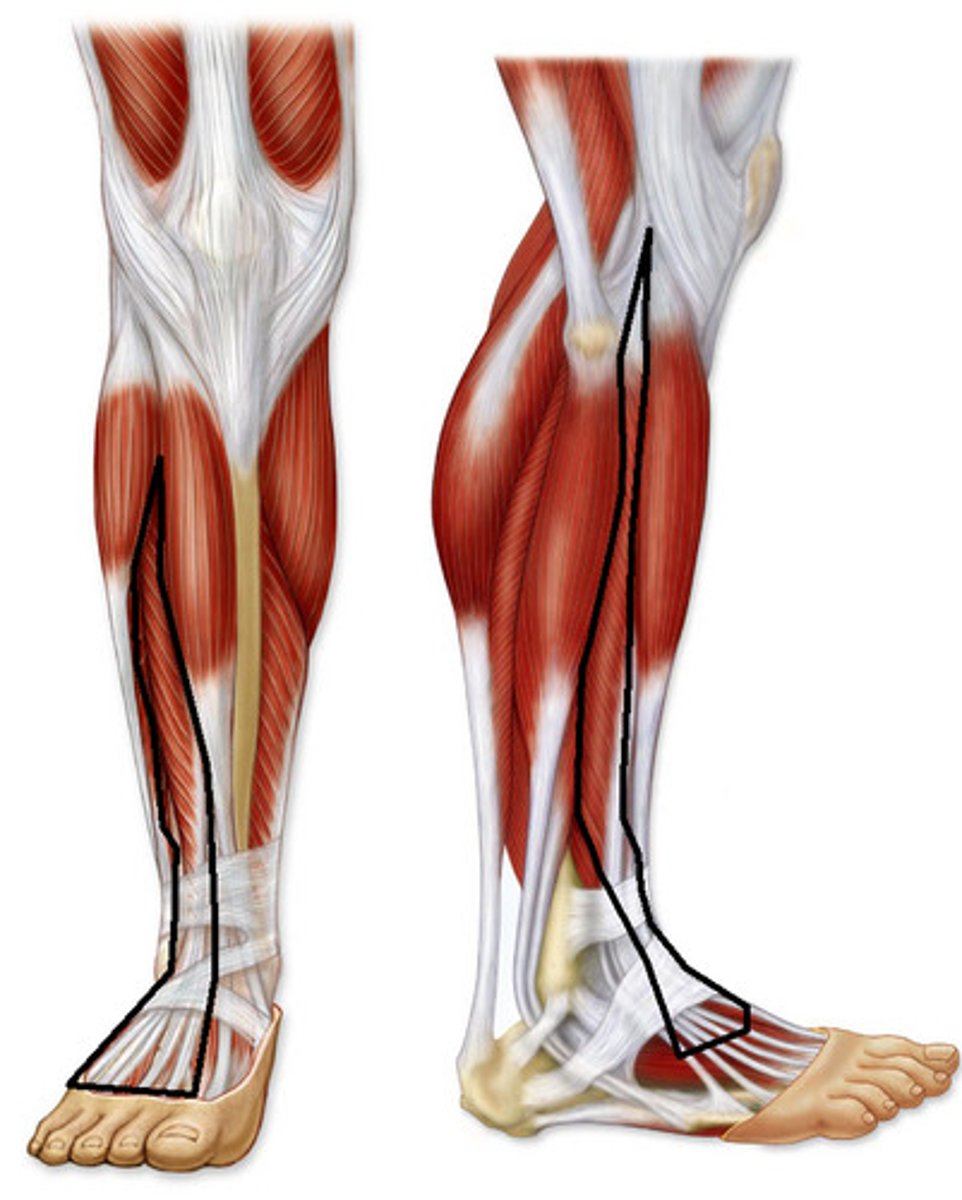
Extensor Hallucis Longus
Origin: medial fibular surface
Insertion: distal phalanx I
Action: dorsiflexes foot; extends hallux
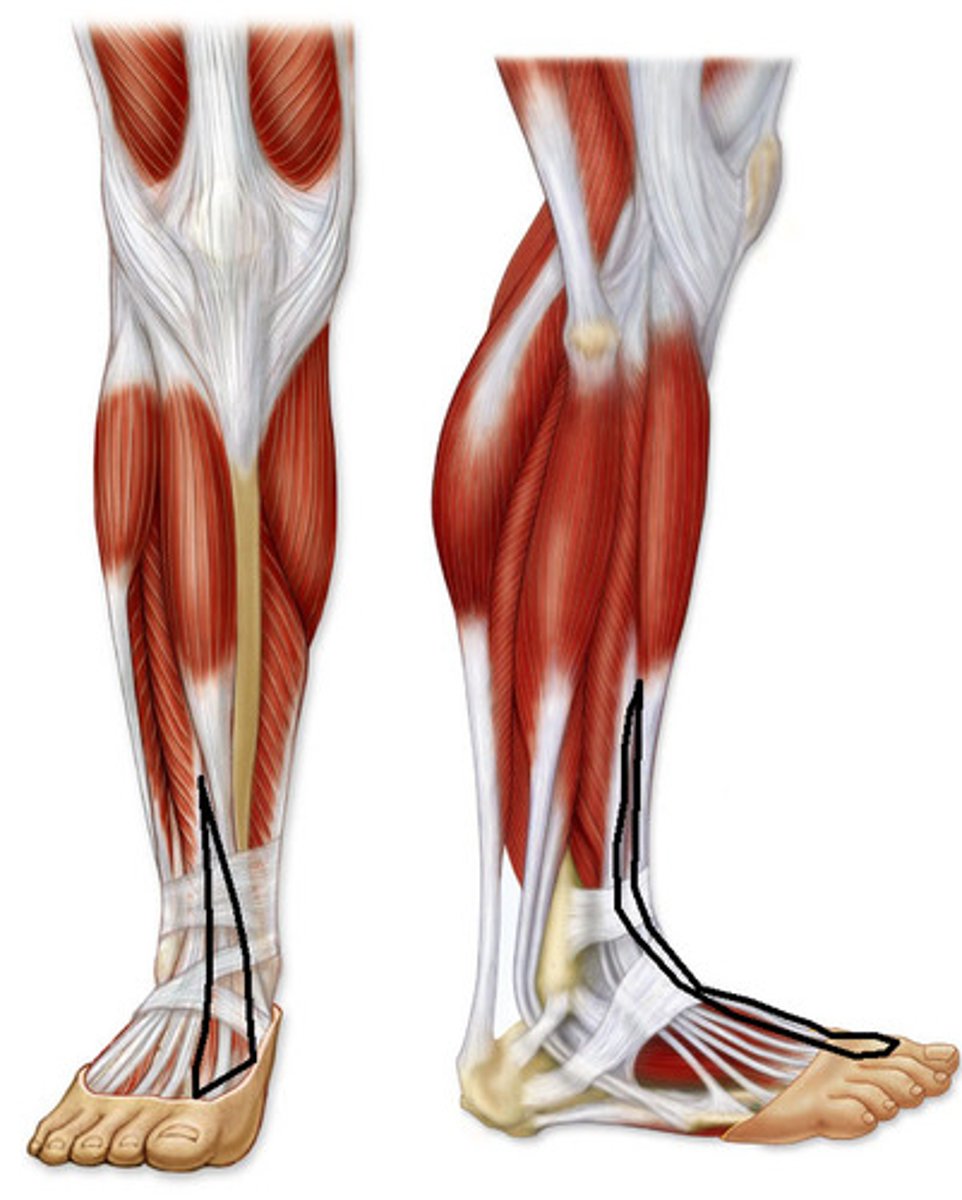
Fibularis Longus
Origin: head and lateral border of fibula
Insertion: passes across plantar surface of foot, inserts on medial cuneiform and metatarsal I
Action: plantarflexes nad everts foot
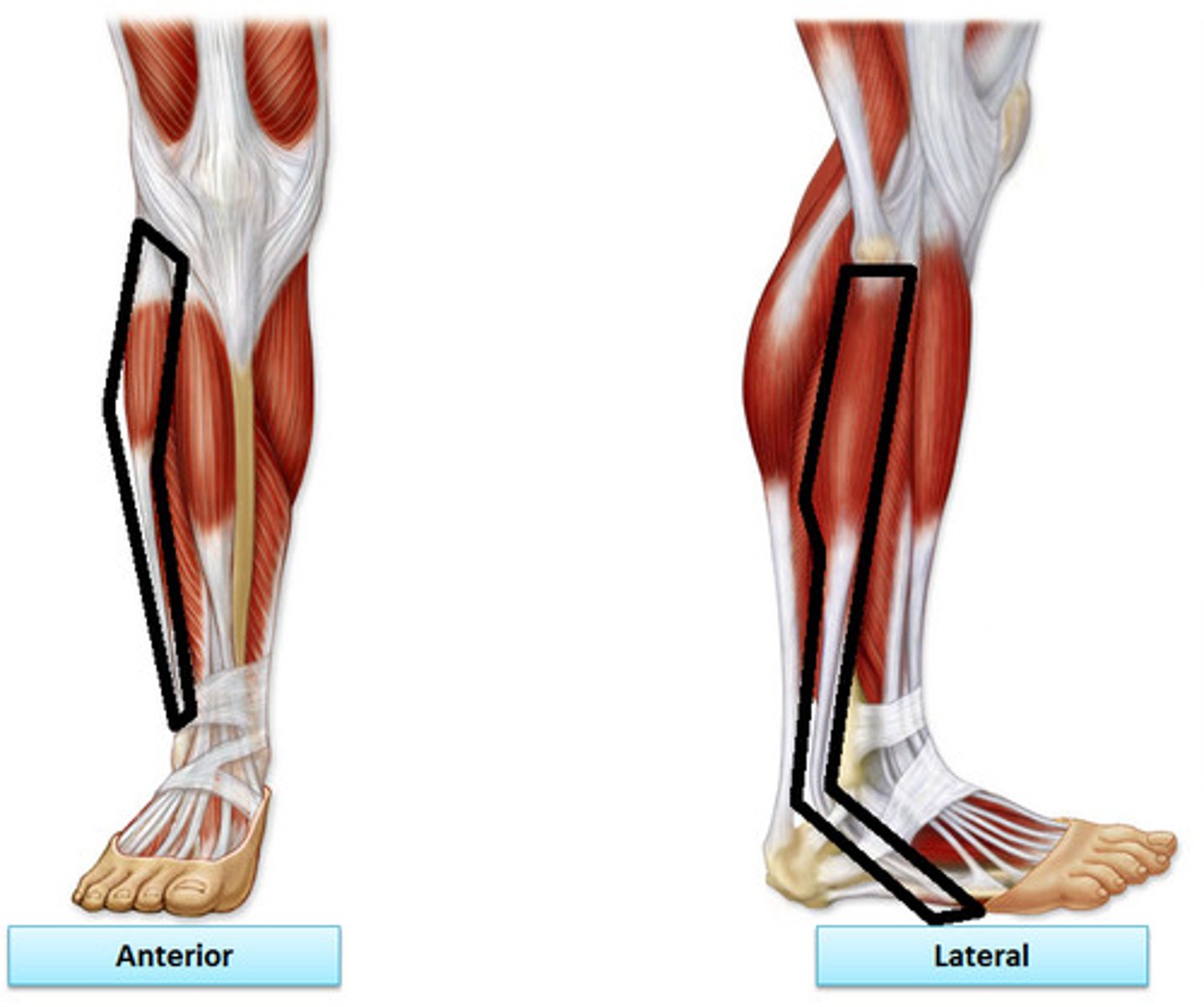
Fibularis Brevis
Origin: distal lateral border of fibula
Insertion: metatarsal V
Action: plantarflexes and everts foot
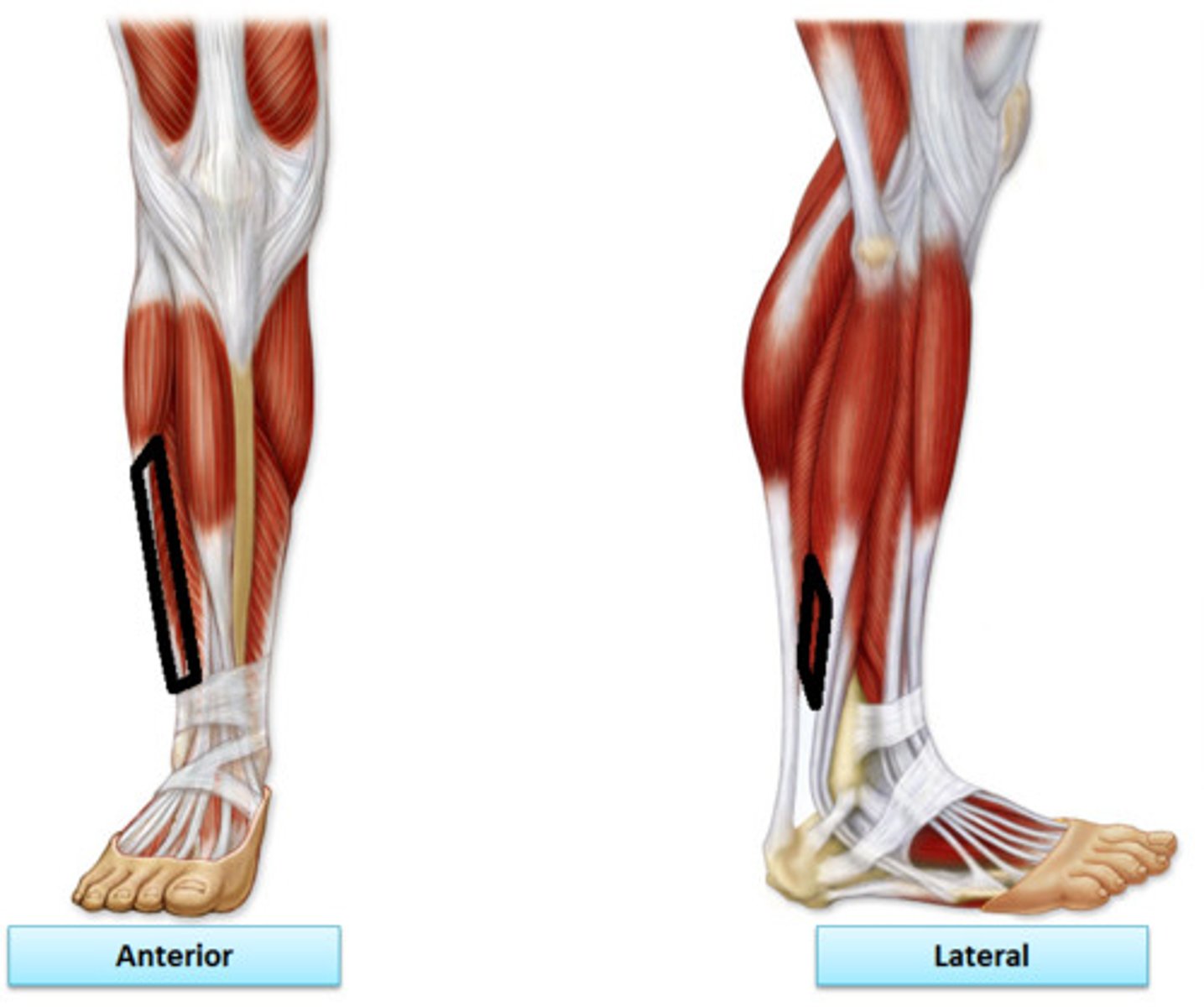
Gastrocnemius
Origin: epicondyles of femur
Insertion: calcaneal tuberosity
Action: plantar flexes food and flexes knee
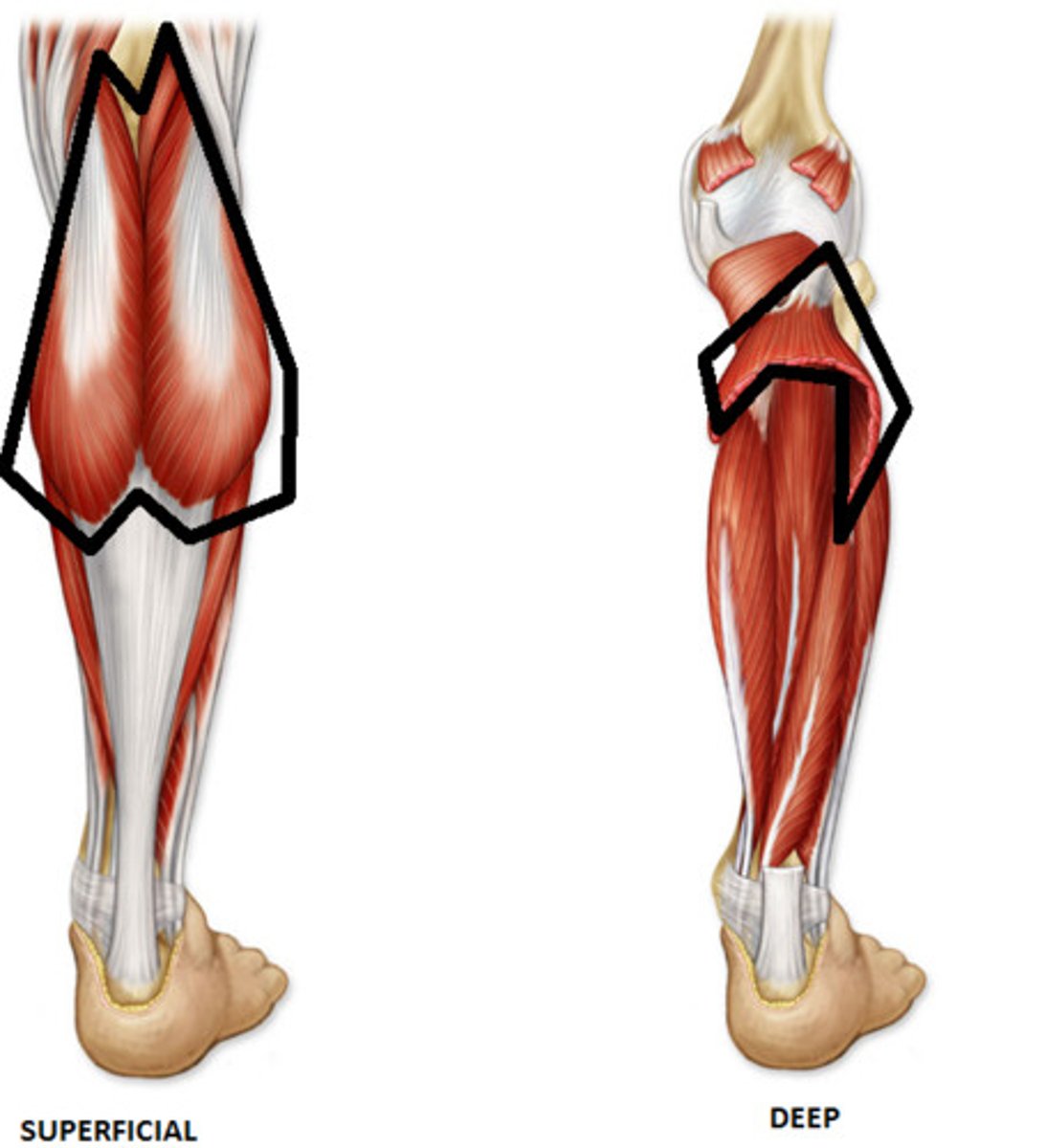
Soleus
Origin: posterior tibial and fibular surfaces
Insertion: calcaneal tuberosity
Action: plantar flexes foot and flexes knee
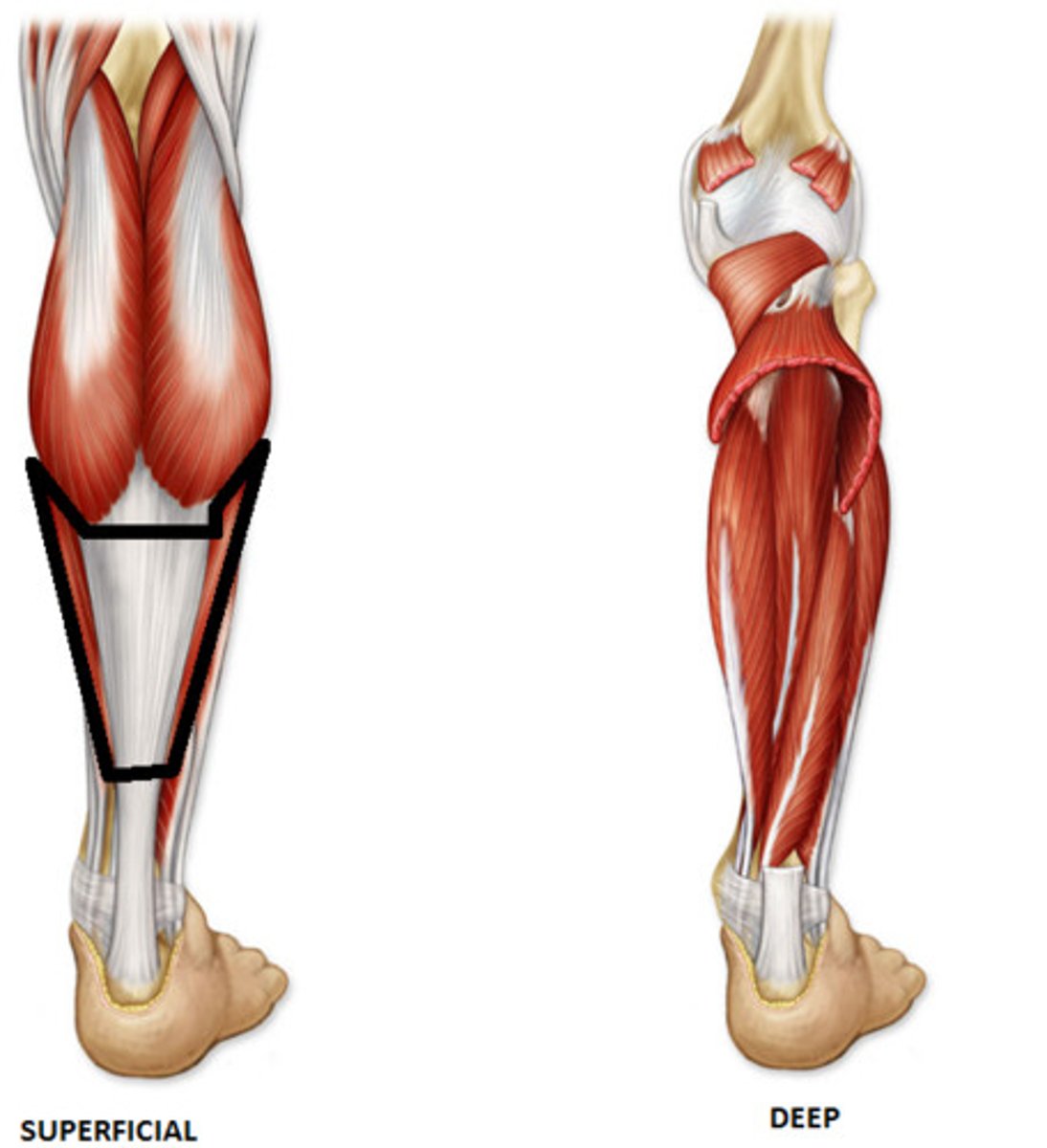
Plantaris
Origin: lateral epicondyle of femur
Insertion: calcaneal tuberosity
Action: minimial action
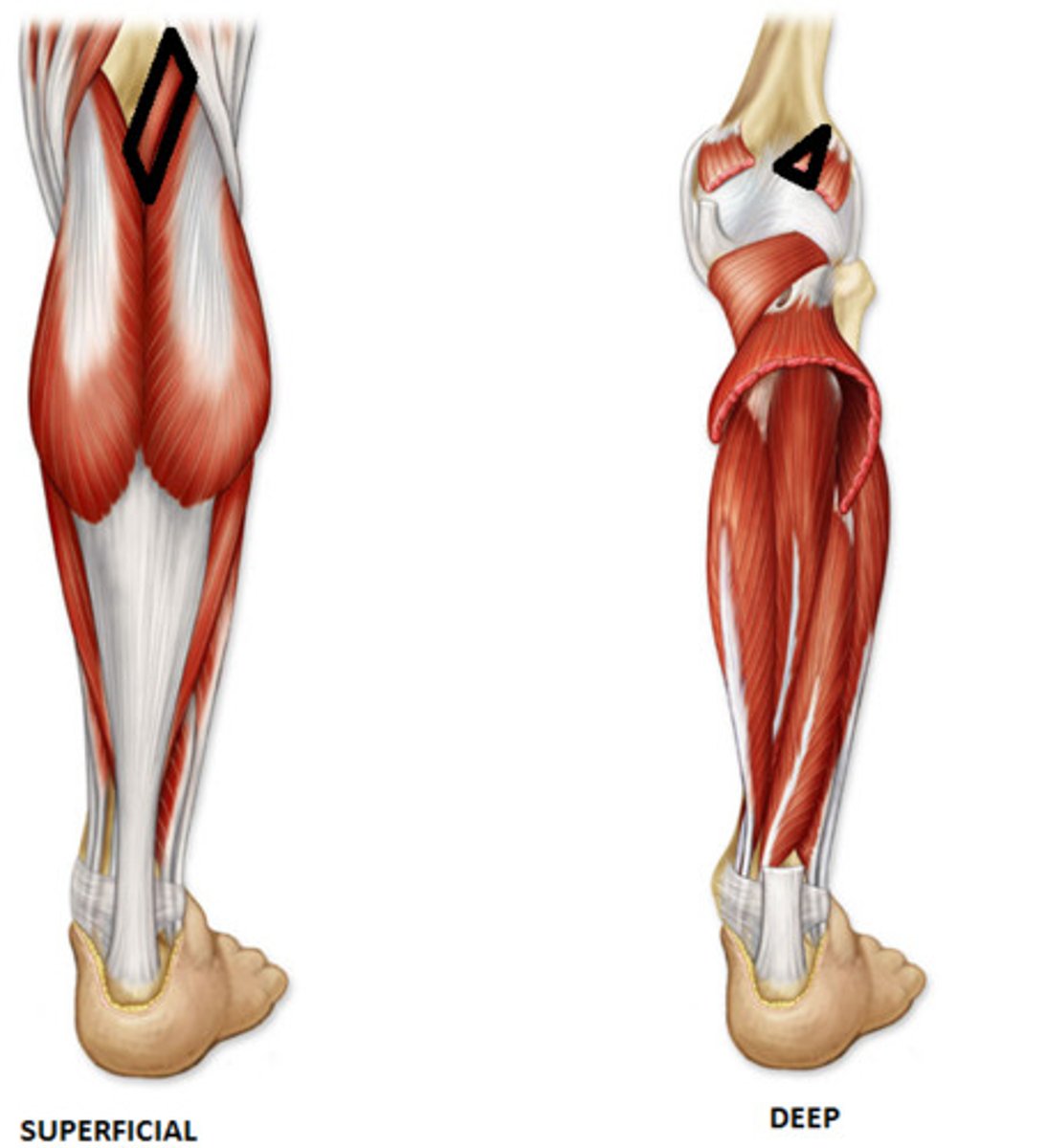
Calcaneal Tendon
common tendon for the superficial posterior leg muscles
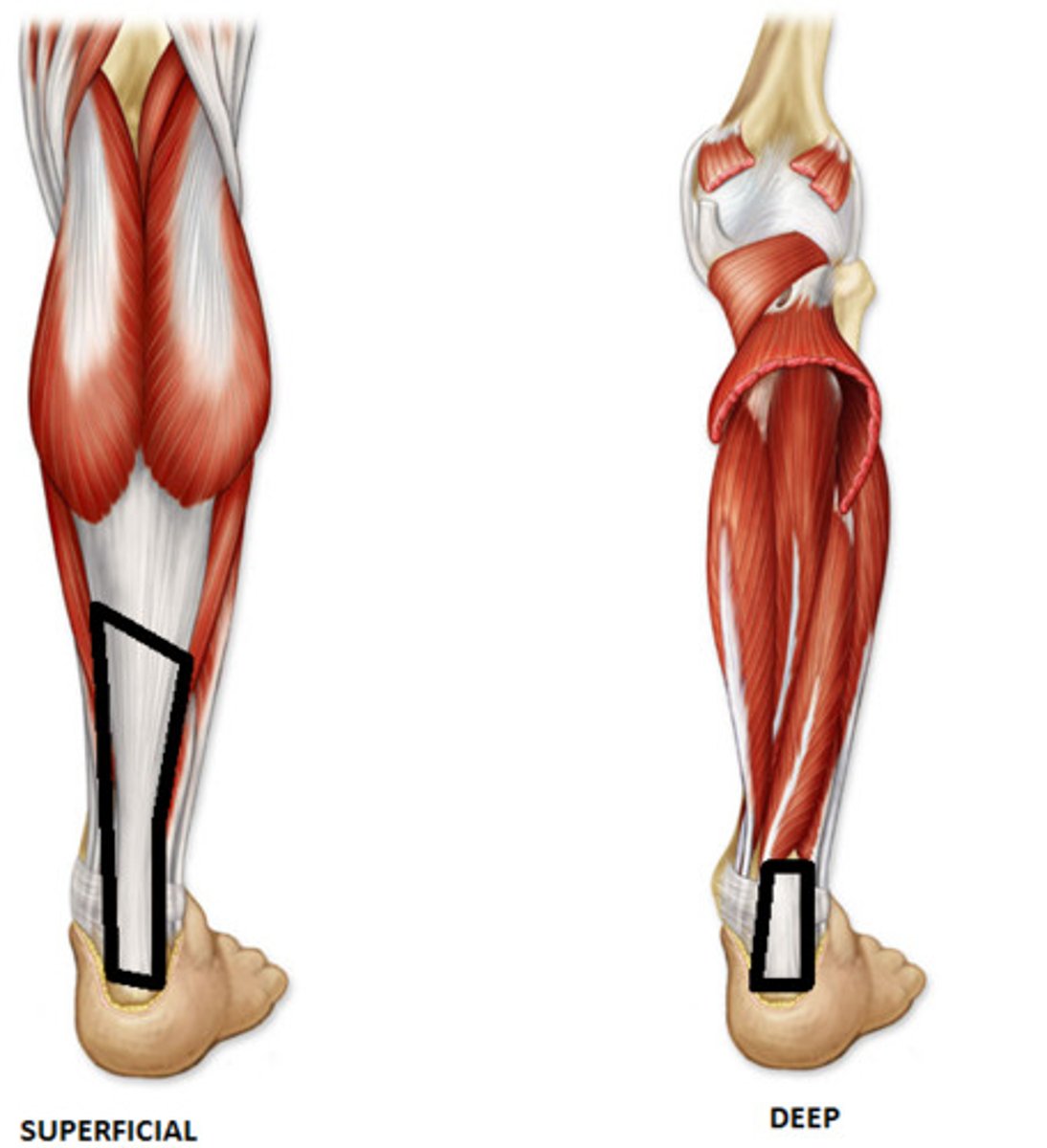
Popliteus
Origin: lateral epicondyle of femur
Insertion: posterior tibial surface
Action: flexes and rotates knee (limited)
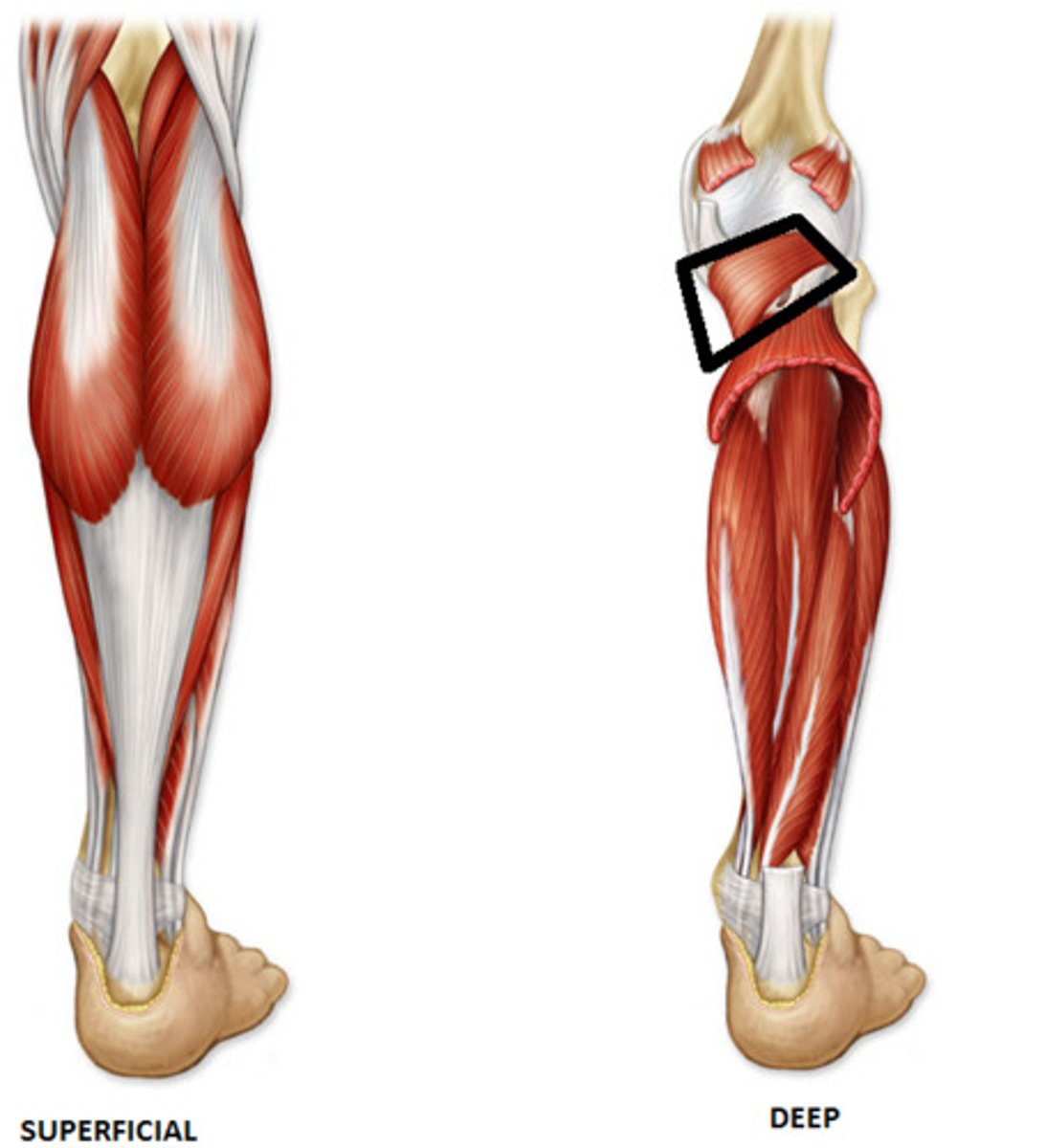
Tibialis Posterior
Origin: proximal 1/2 of interosseus membrane, tibia and fibia
Insertion: plantar surface of navicular, cuneiforms and metatarsals II-V
Action: supports arch of foot
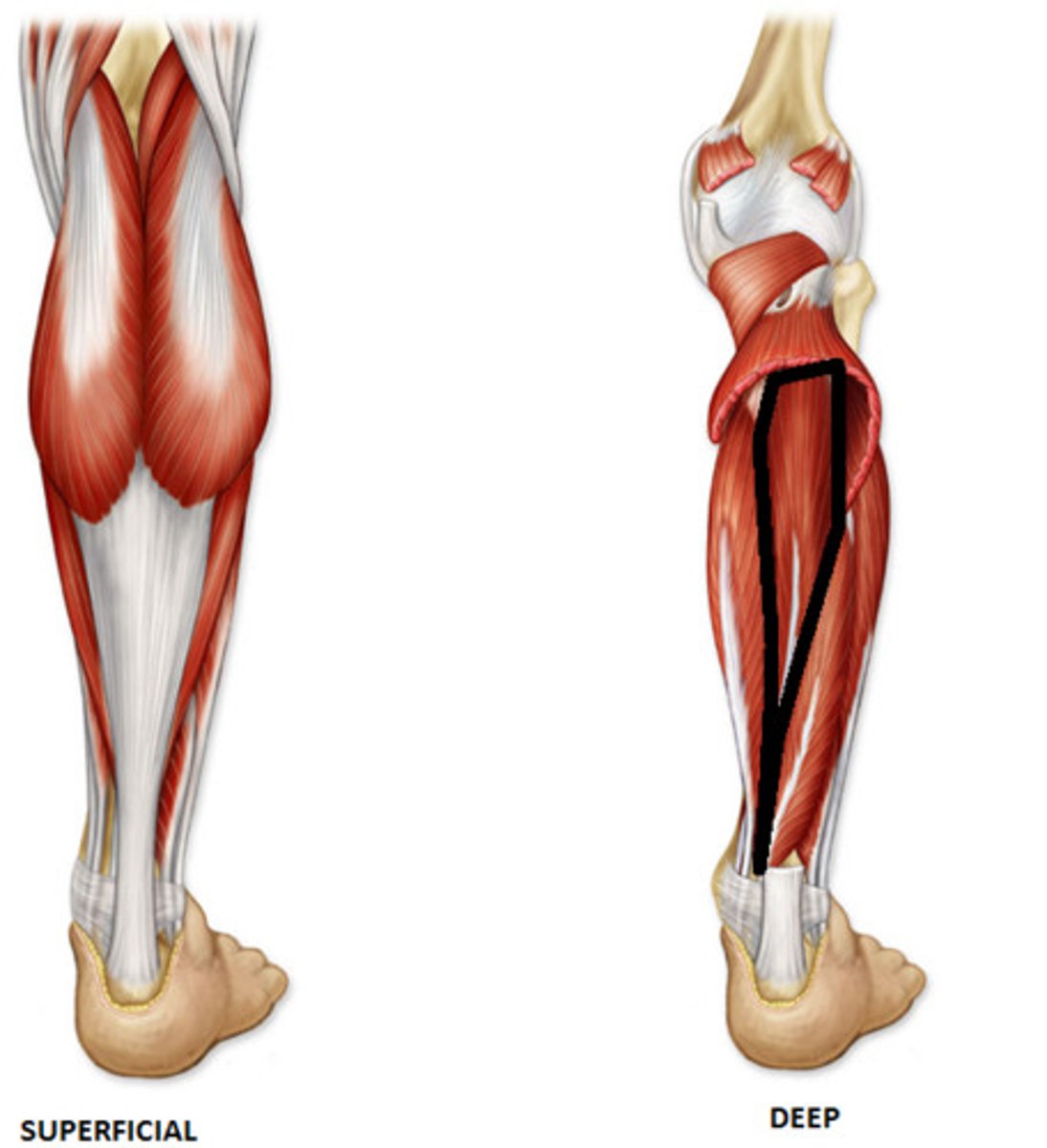
Flexor Digitorum Longus
Origin: middle 1/3 of posterior tibia
Insertion: distal phalanges II-V (accross the plantar surface)
Action: inverts foot; flexes digits II-V
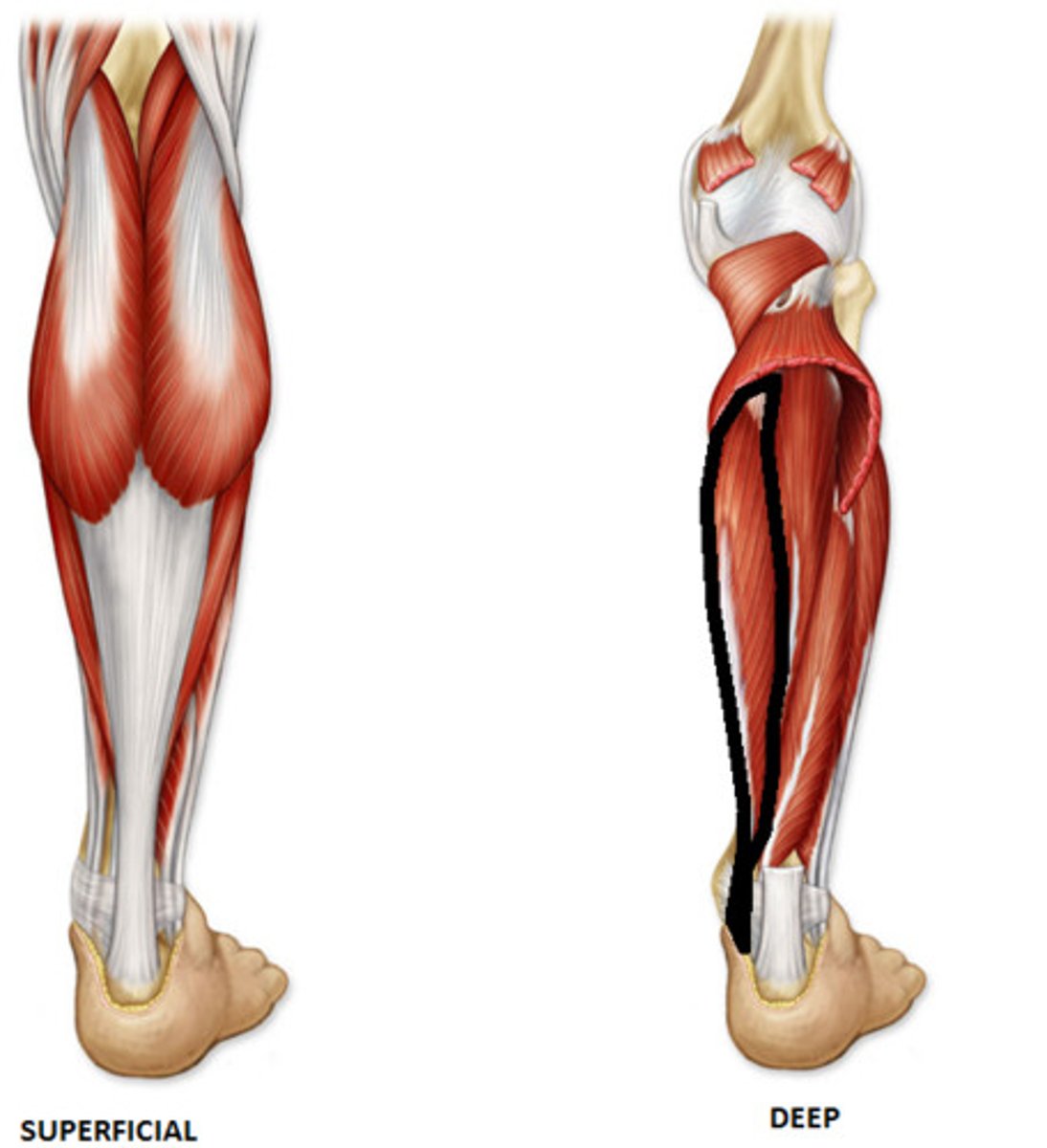
Flexor Hallucis Longus
Origin: middle 1/3 of posterior fibula
Insertion: distal phalanx I
Action: plantarflexes and inverts foot; flexes hallux
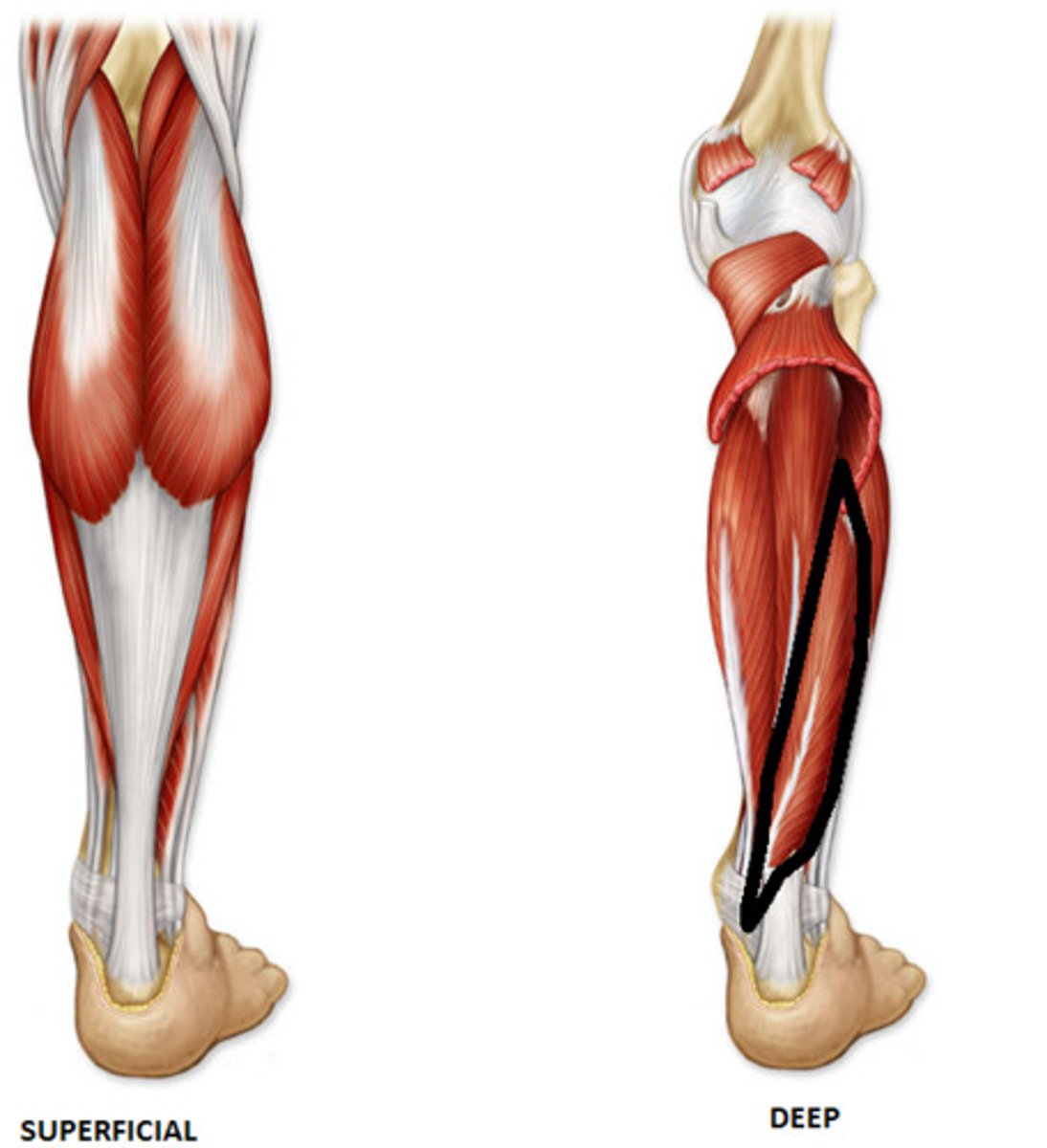
Extensor Digitorum Brevis
Origin: dorsal surface of calcaneus
Insertion: middle phalanges of digits II-V
Action: extends digits II-V
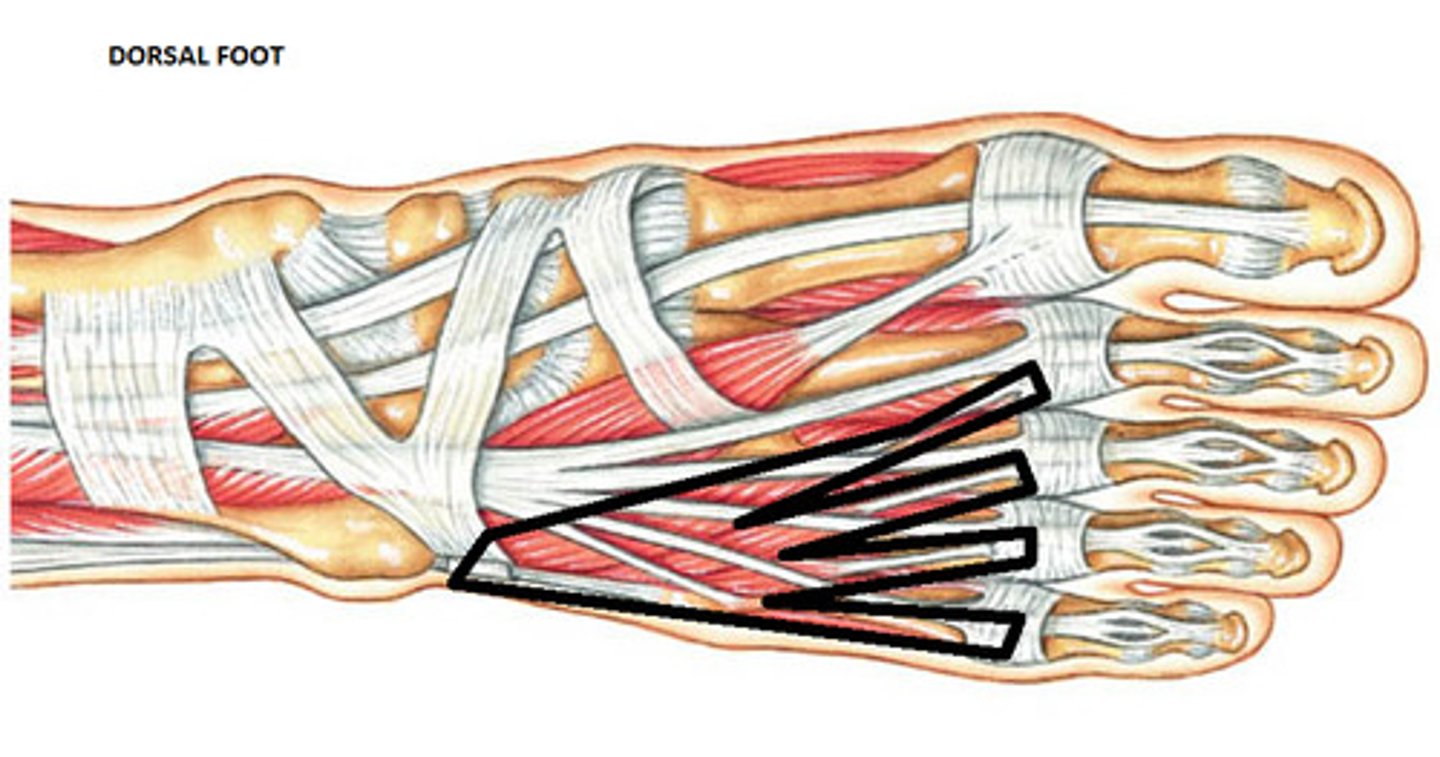
Extensor Hallucis Brevis
Origin: dorsal surface of calcaneus
Insertion: base of prozimal phalanx I
Action: extends digit I
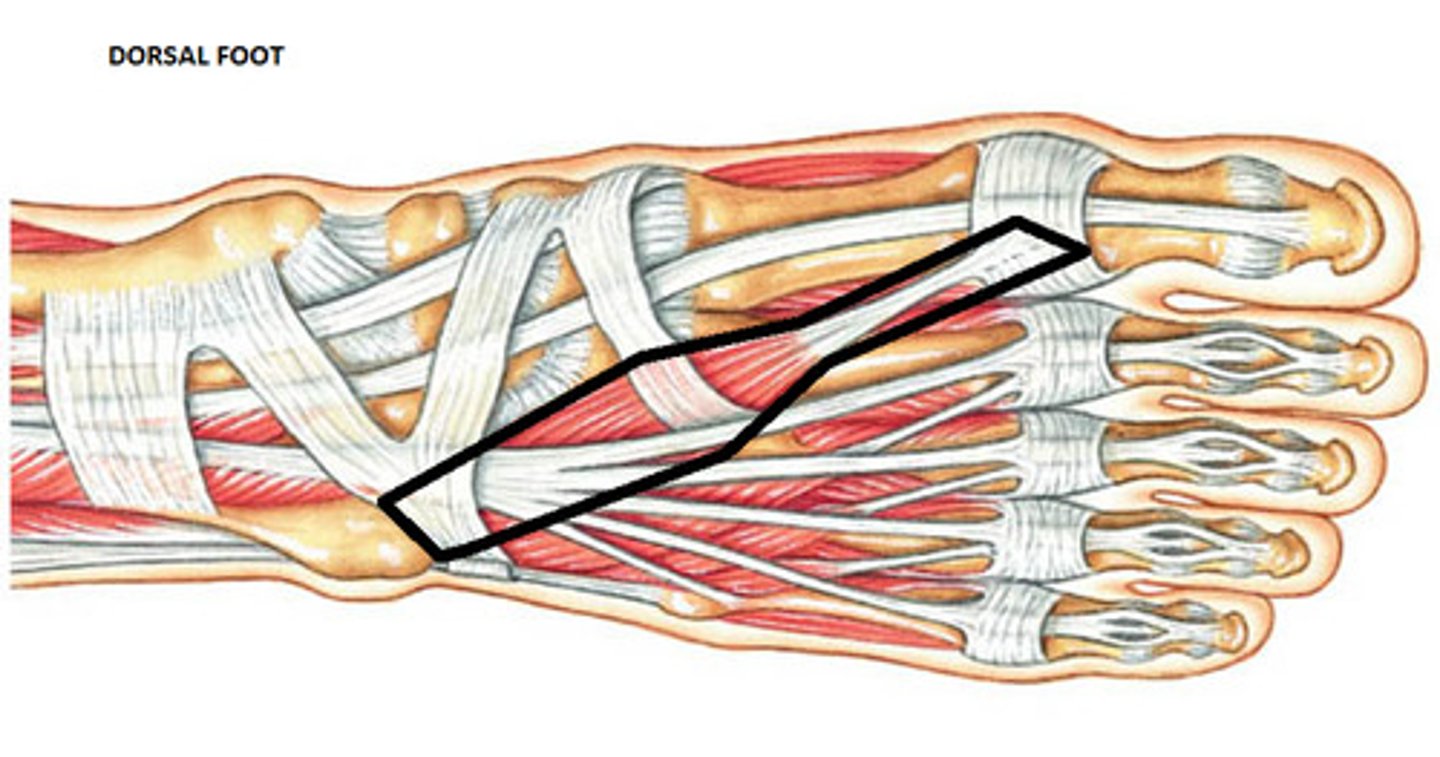
Abductor Hallucis
Origin: calcaneal tuberosity
Insertion: base of proximal phalanx I
Action: abducts and flexes hallux
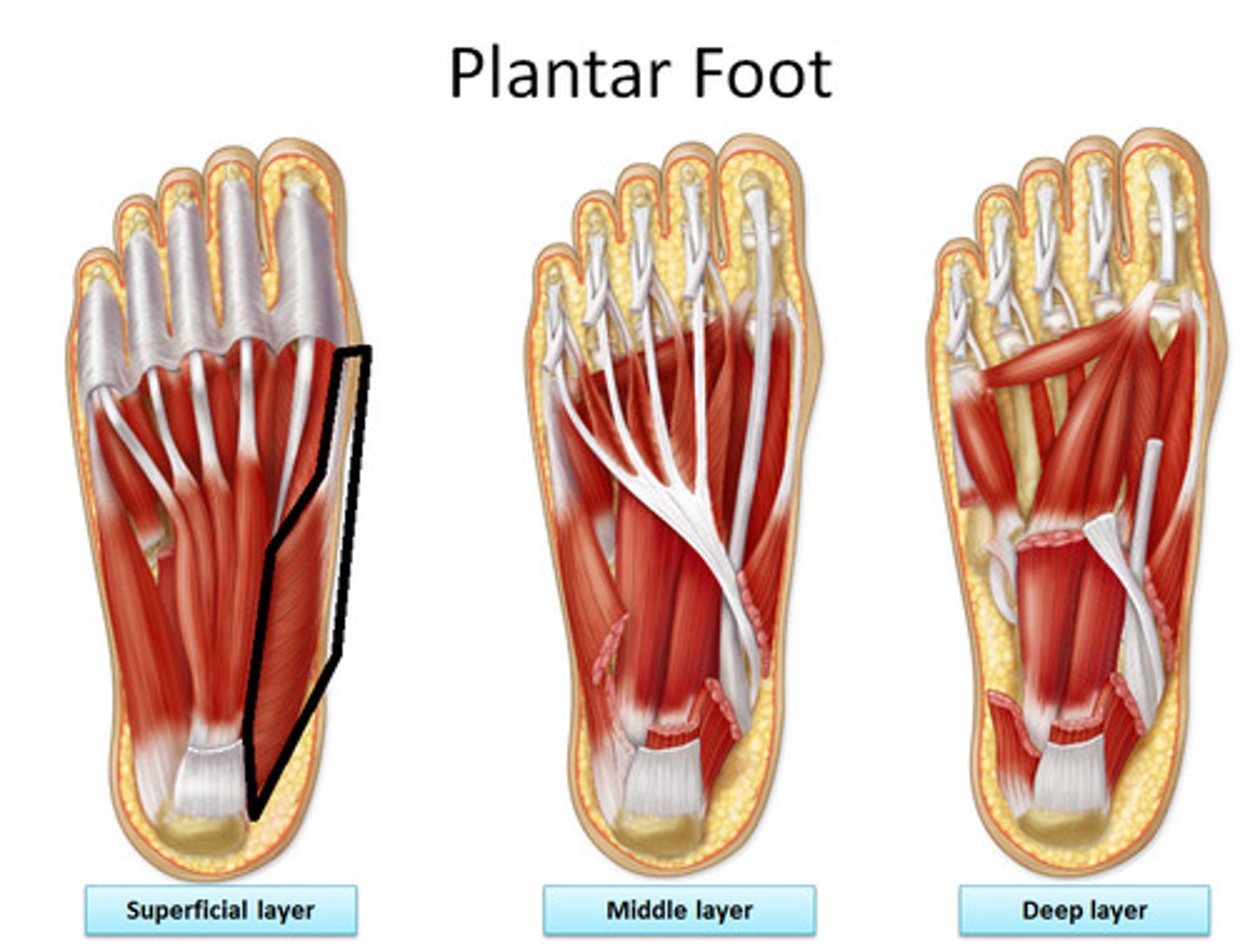
Adductor Hallucis
Origin: oblique head from base of metatarsals II-IV; transverse head from head of metatarsals III-V
Inserion: base of proximal phalanx I
Action: adducts and flexes hallux
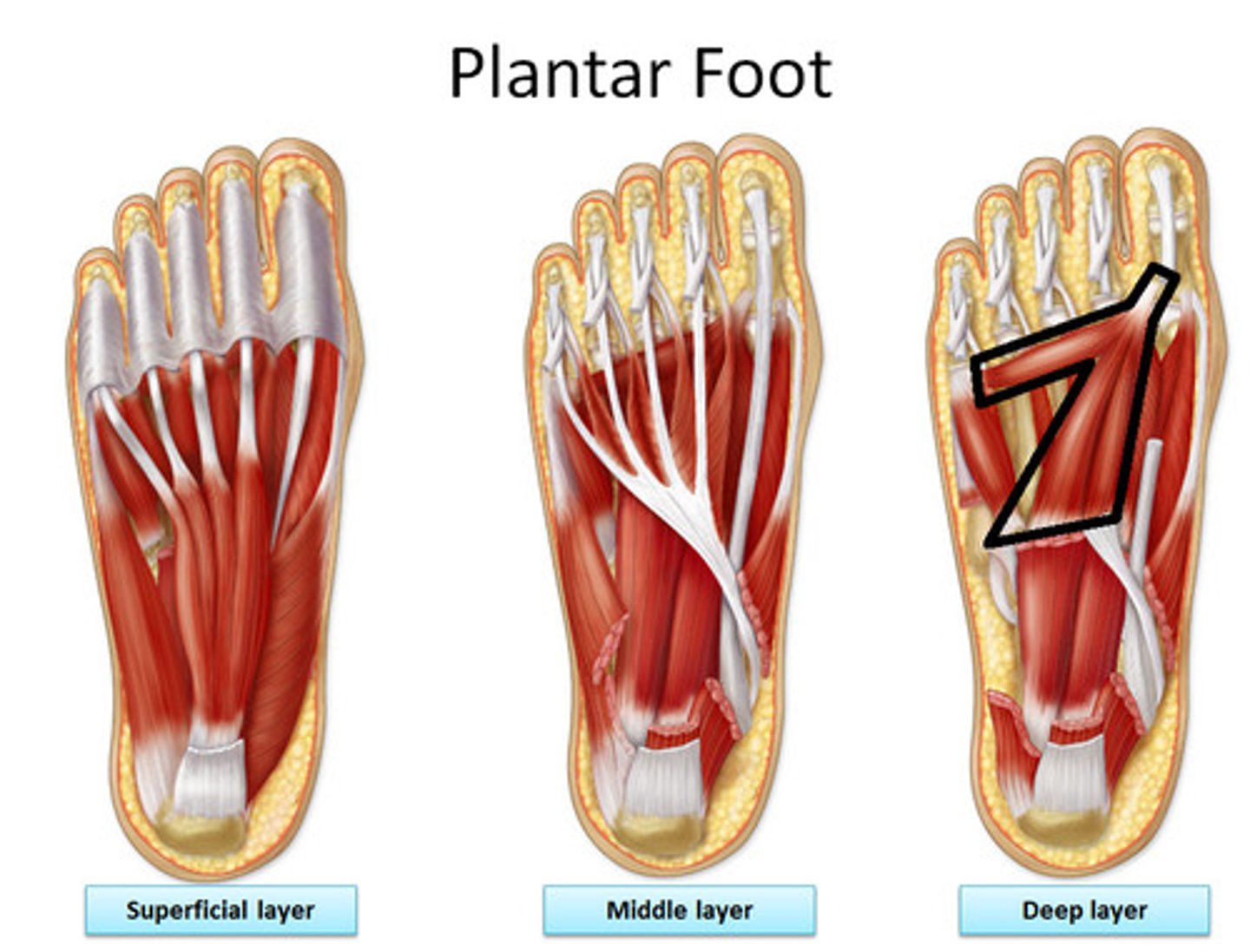
Flexor Hallucis Brevis
Origin: medial and intermediate cuneiforms
Inserion: base of prozimal phalanx I
Action: flexes hallux
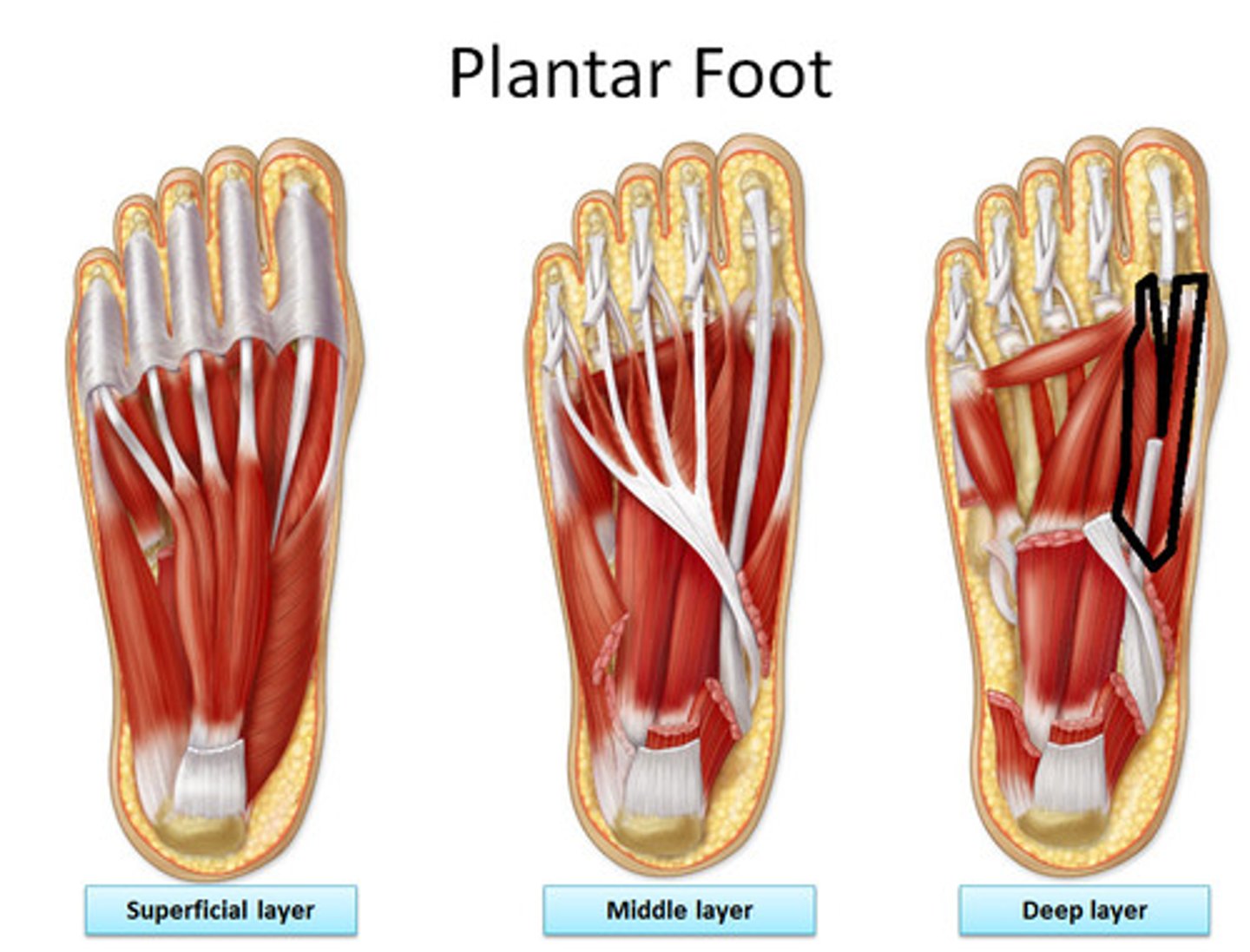
Abductor Digiti Minimi
Origin: calcaneal tuberosity
Insertion: base of proximal phalanx V and tuberosity of metatarsal V
Action: abducts and flexes digit V
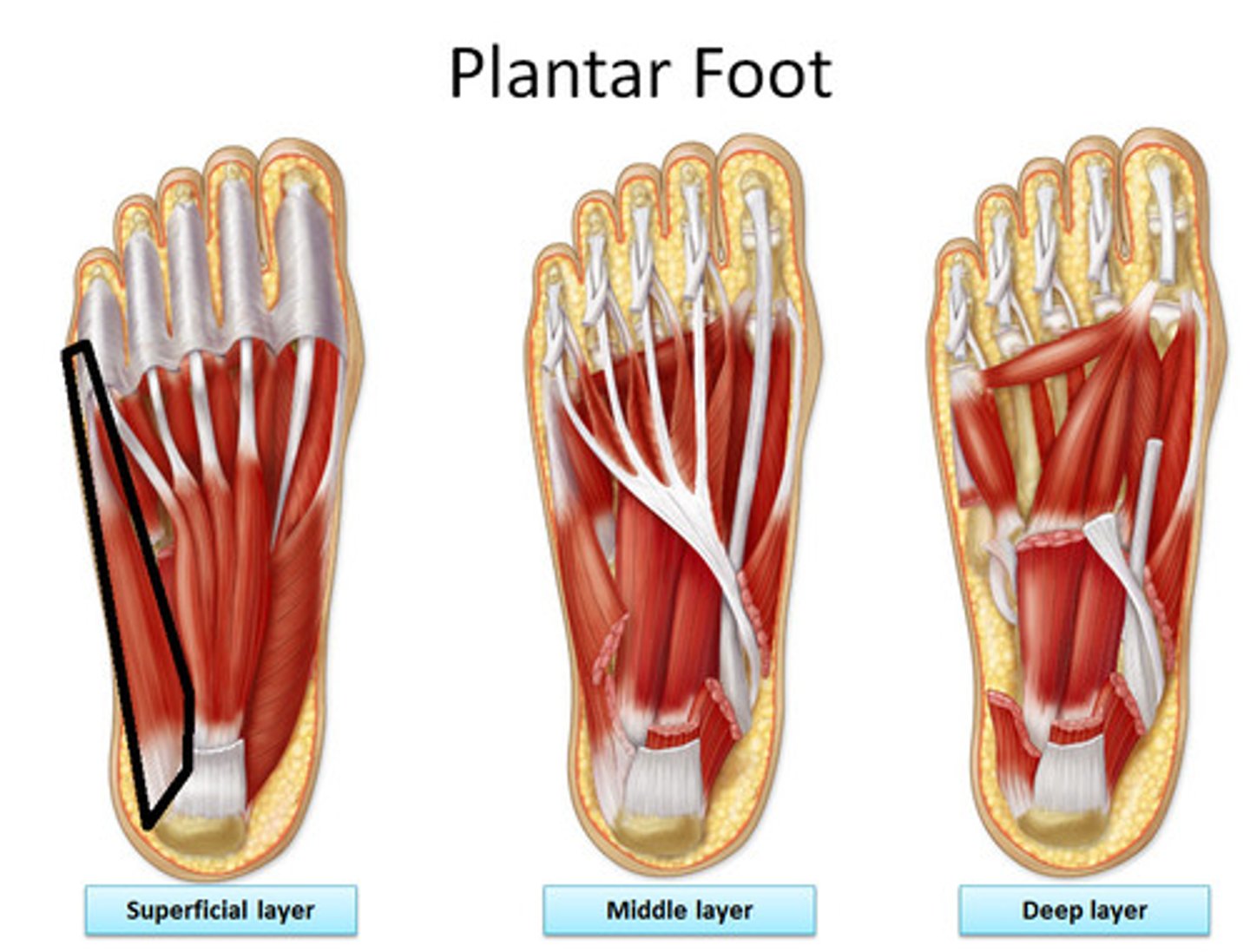
Flexor Digiti Minimi
Origin: base of metatarsal V
Insertion: base of proximal phalanx V
Action: flexes digit V
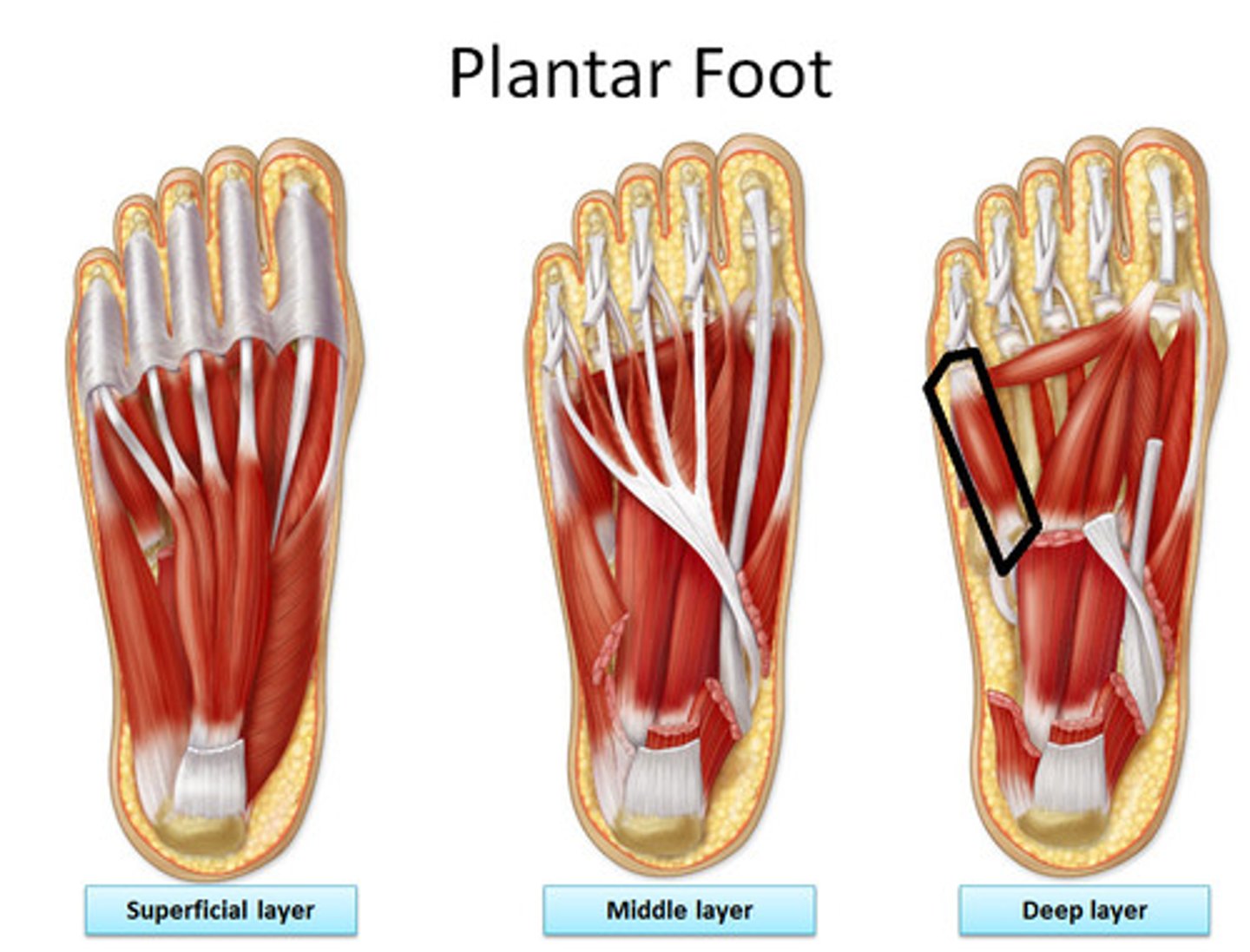
Plantar Aponeurosis
broad CT sheet coverin plantar surface of foot
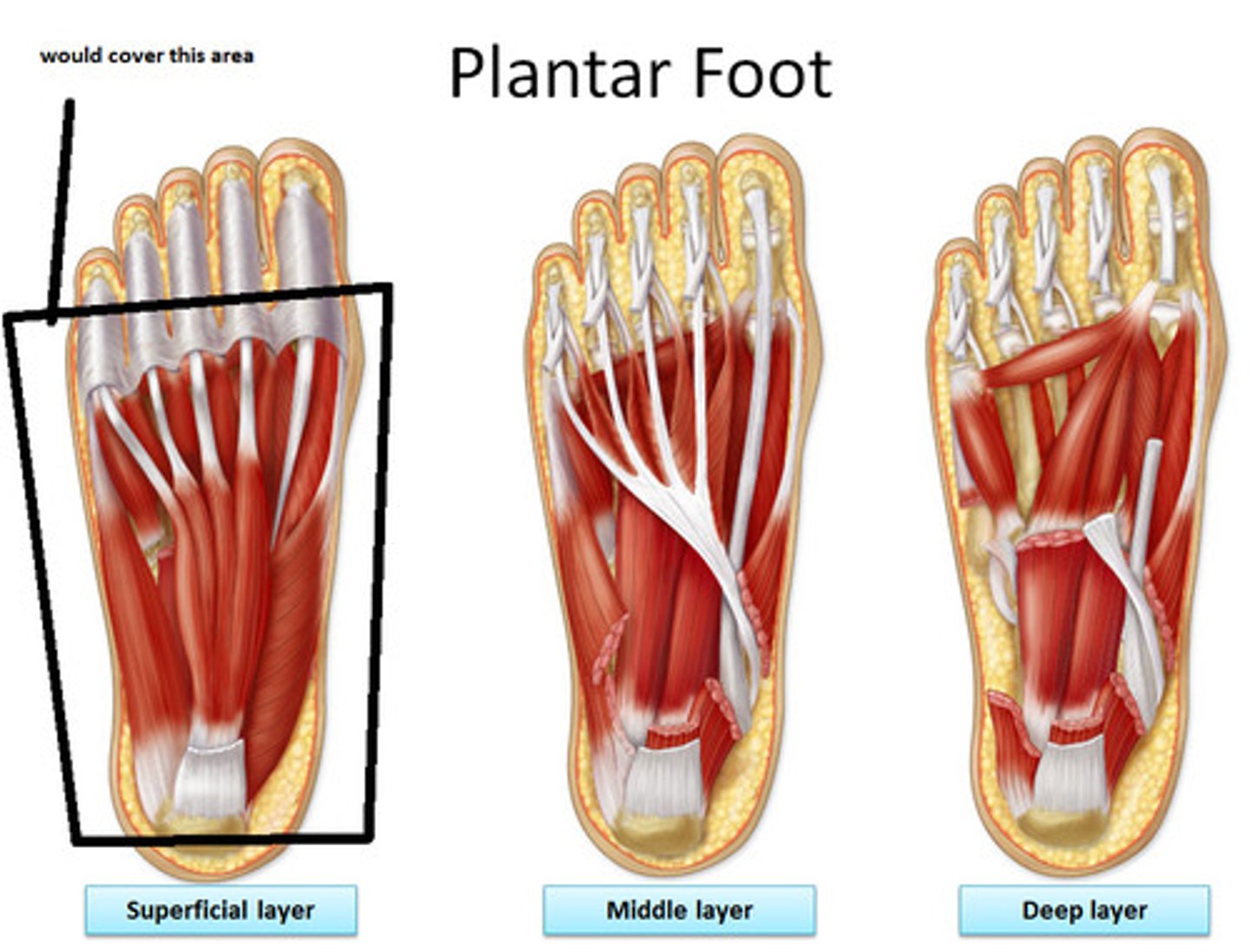
Flexor Digitorum Brevis
Origin: calcaneal tuberosity
Insertion: base of middle phalanges II-V
Action: flexes digits II-V
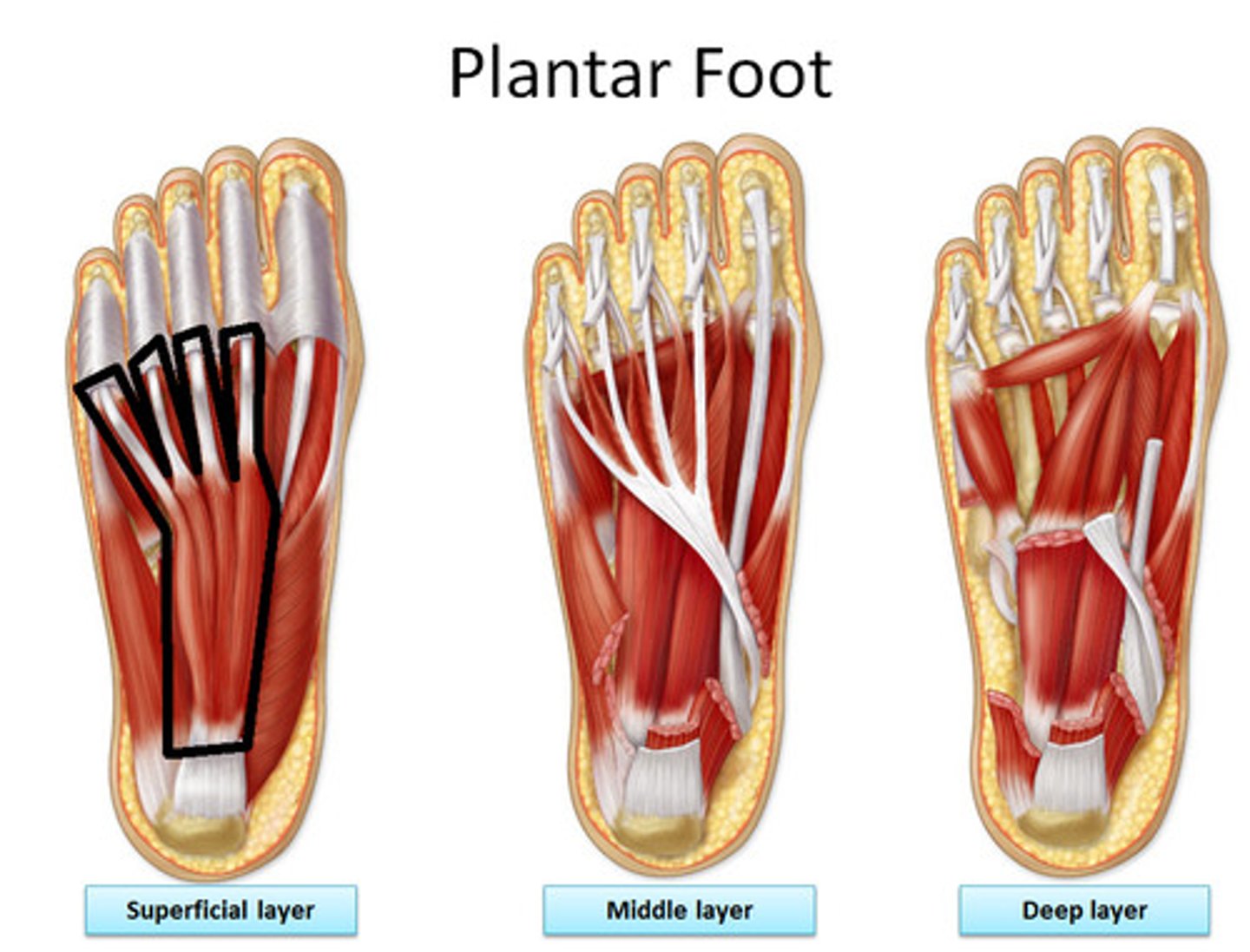
Quadratus Plantae
Origin: calcaneal tuberosity
Insertion: lateral border of flexor digitorum longus tendon
Action: redirects and augments action of flexor digitorum longus
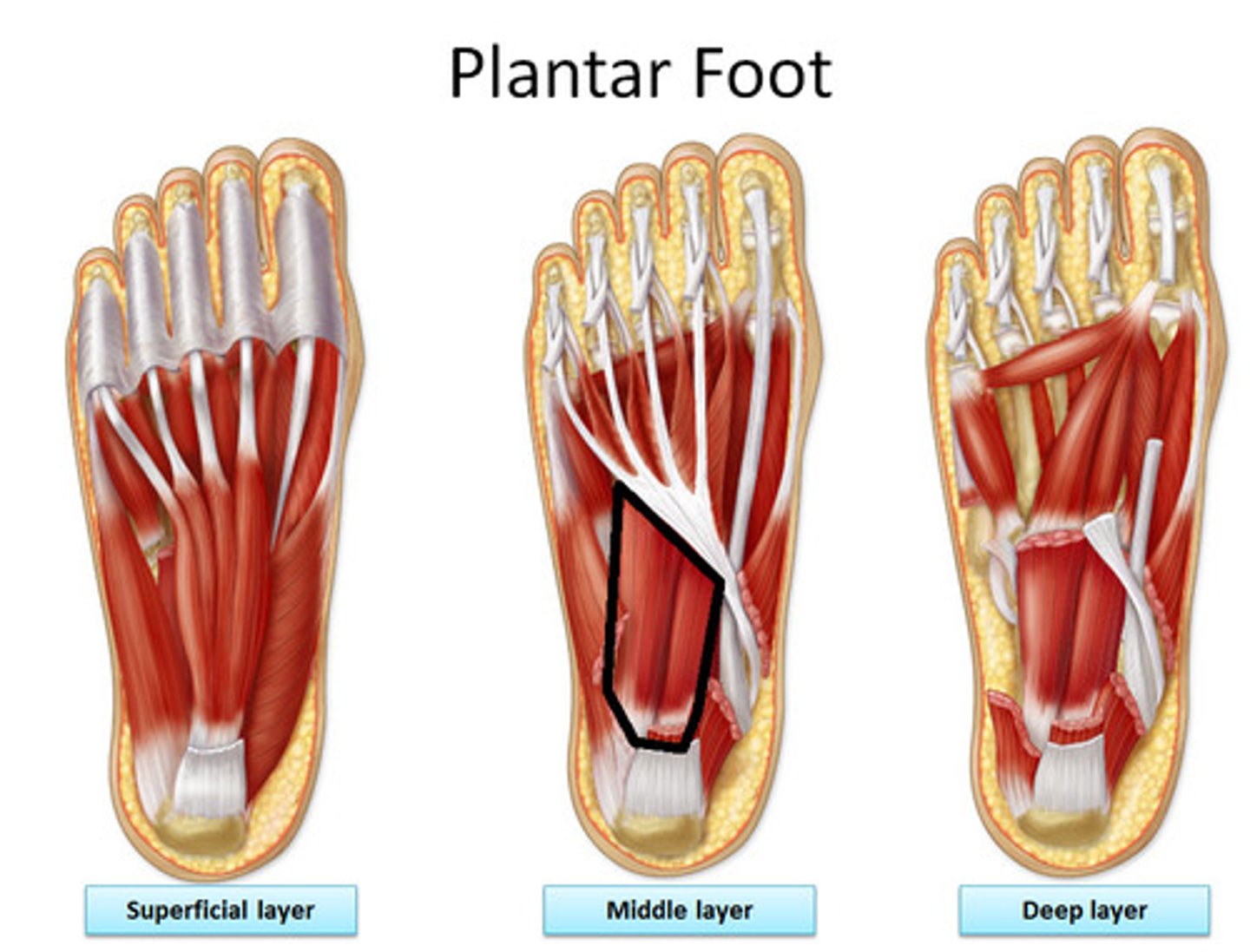
Lumbricals (4)
Origin: medial borders of digital branches of flexor digitorum longus tendon
Inserion: dorsal aponeuroses of digits II-V
Action: flexes metatarso-phalangeal joints and extends interphangeal joints of digits II-V; adducts digit V
